Search Result
Results for "
sodium
" in MedChemExpress (MCE) Product Catalog:
15
Biochemical Assay Reagents
1
Isotope-Labeled Compounds
| Cat. No. |
Product Name |
Target |
Research Areas |
Chemical Structure |
-
- HY-B1610J
-
|
|
Biochemical Assay Reagents
|
Others
|
|
Sodium citrate buffer, 0.5M, pH 5.0, is a commonly used buffer with main components are citric acid and sodium hydrogen phosphate. Sodium citrate buffer, 0.5M, pH 5.0 is used in heat induced epitope retrieval (HIER) methods to reverse the loss of antigenicity that occurs with some epitopes in formalin-fixed paraffin embedded tissues. Sodium citrate buffer, 0.5M, pH 5.0 is the preferred solution for most antibodies . Sodium citrate buffer, 0.5M, pH 5.0 is used as solution for captisol in animal tumor models .
|
-
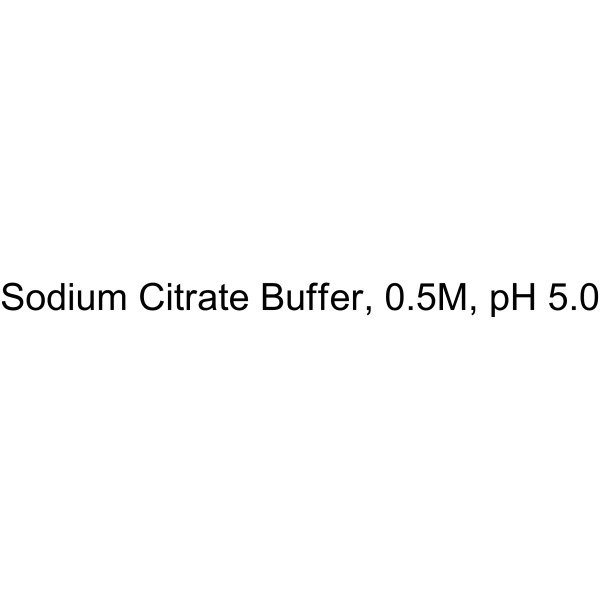
-
- HY-Y1325E
-
|
sodium acetate trihydrate (Pharmaceutical primary standard, USP)
|
Biochemical Assay Reagents
|
Others
|
|
Sodium acetate trihydrate, United States Pharmacopeia (USP) Reference Standard is an inorganic salt that can be used for life science related research .
|
-

-
- HY-B1610K
-
|
|
Biochemical Assay Reagents
|
Others
|
|
Sodium citrate buffer, 0.5M, pH 5.5, is a commonly used buffer with main components are citric acid and sodium hydrogen phosphate. Sodium citrate buffer 0.5M pH 5.5 is used in heat induced epitope retrieval (HIER) methods to reverse the loss of antigenicity that occurs with some epitopes in formalin-fixed paraffin embedded tissues. Sodium citrate buffer 0.5M pH 5.5 is the preferred solution for most antibodies. .
|
-
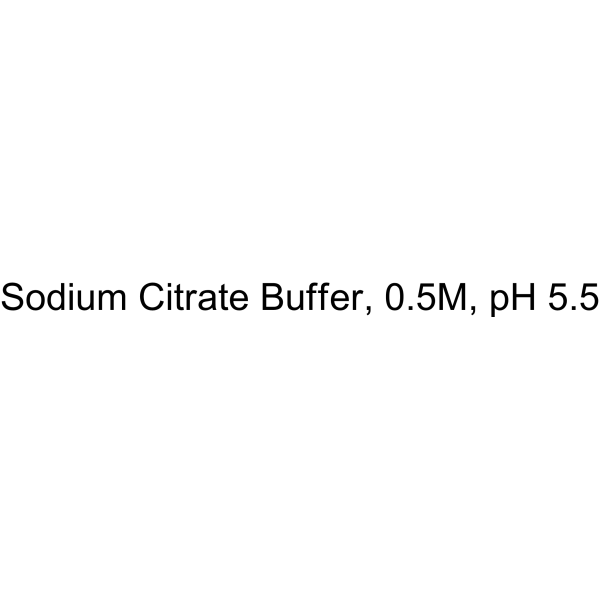
-
- HY-B1610L
-
|
|
Biochemical Assay Reagents
|
Others
|
|
Sodium citrate buffer, 0.5M, pH 6.0, is a commonly used buffer with main components are citric acid and sodium hydrogen phosphate. Sodium citrate buffer, 0.5M, pH 6.0 is used for RNA isolation and antigens detection in fixed tissue .
|
-
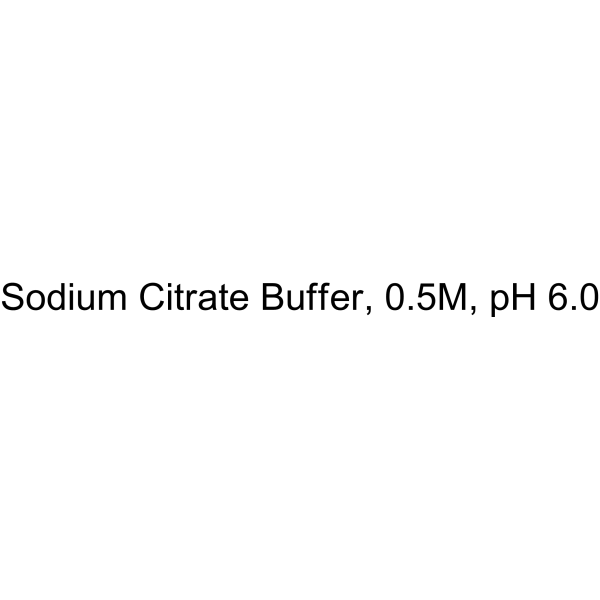
-
- HY-B1610M
-
|
|
Biochemical Assay Reagents
|
Others
|
|
Sodium citrate buffer, 0.5M, pH 6.5, is a commonly used buffer with main components are citric acid and sodium hydrogen phosphate. Sodium citrate buffer, 0.5M, pH 6.5 is used in heat induced epitope retrieval (HIER) methods to reverse the loss of antigenicity that occurs with some epitopes in formalin-fixed paraffin embedded tissues. Sodium citrate buffer, 0.5M, pH 6.5 is the preferred solution for most antibodies .
|
-
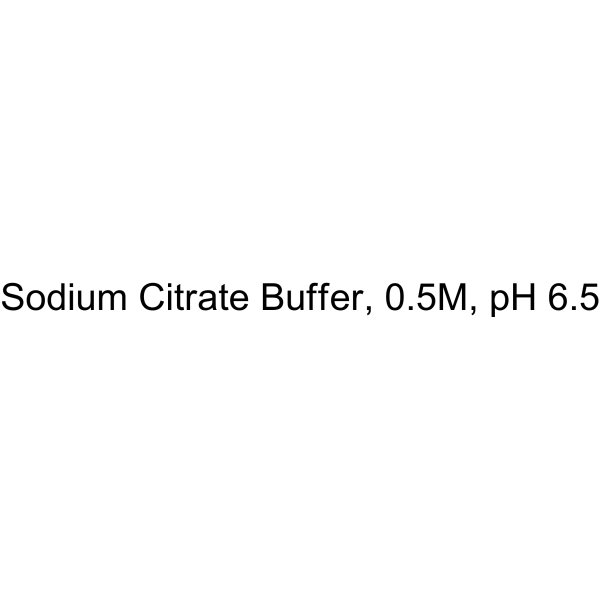
-
- HY-B1610N
-
|
|
Biochemical Assay Reagents
|
Others
|
|
Sodium citrate buffer, 0.1M, pH 4.0, is a commonly used buffer with main components are citric acid and sodium hydrogen phosphate. Sodium citrate buffer, 0.1M, pH 4.0 is used in heat induced epitope retrieval (HIER) methods to reverse the loss of antigenicity that occurs with some epitopes in formalin-fixed paraffin embedded tissues. Sodium citrate buffer, 0.1M, pH 4.0 is the preferred solution for most antibodies . Sodium citrate buffer, 0.1M, pH 4.0 is used in the hydration of liposome film .
|
-
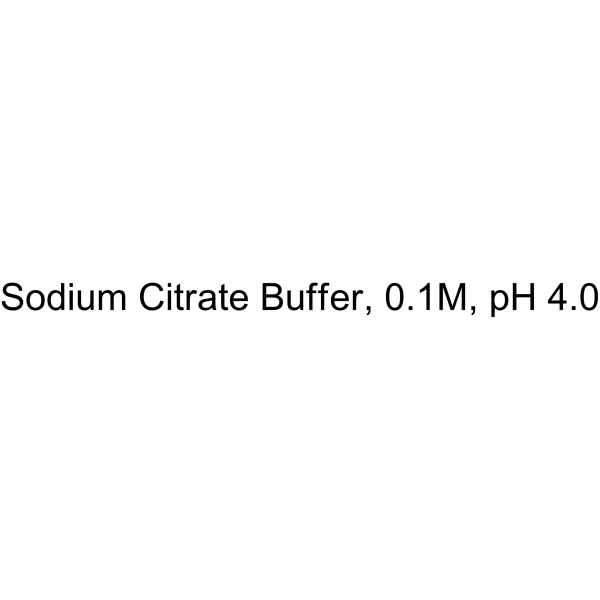
-
- HY-F0002
-
|
sodium NADP
|
Endogenous Metabolite
|
Others
|
|
NADP sodium salt is the sodium salt form of NADP (HY-113325). NADP, a nicotinamide adenine dinucleotide, is a redox cofactor. NADP is a key cofactor for electron transfer in the metabolism, being alternately oxidized (NADP +) and reduced (NADPH). NADPH is the universal electron donor in cellular reductive biosyntheses and detoxification processes, and also plays a key role in oxidative defense system .
|
-
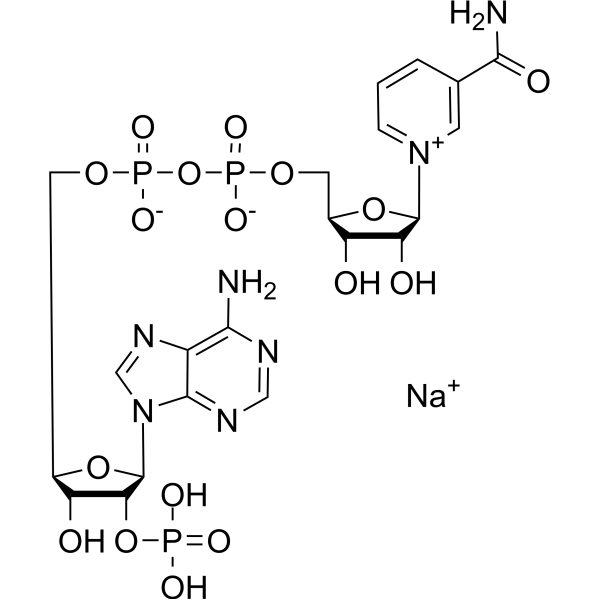
-
- HY-132609
-
|
|
Small Interfering RNA (siRNA)
Transthyretin (TTR)
|
Neurological Disease
|
|
Patisiran sodium is a double-stranded small interfering RNA that targets a sequence within the transthyretin (TTR) messenger RNA. Patisiran sodium specifically inhibits hepatic synthesis of mutant and wild-type TTR. Patisiran sodium can be used for the research of hereditary TTR amyloidosis .
|
-
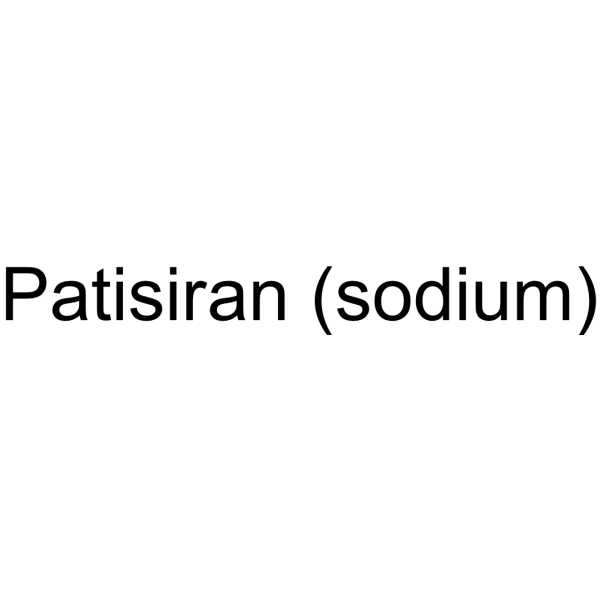
-
- HY-108764
-
|
ISIS 301012
|
HCV
|
Metabolic Disease
|
|
Mipomersen sodium (ISIS 301012) is an antisense oligonucleotide inhibitor of apolipoprotein B (apoB). Mipomersen has anti-HCV effect and reduces the infectivity of the HCV. Mipomersen sodium can be used for the research of homozygous familial hypercholesterolemia (HoFH) .
|
-
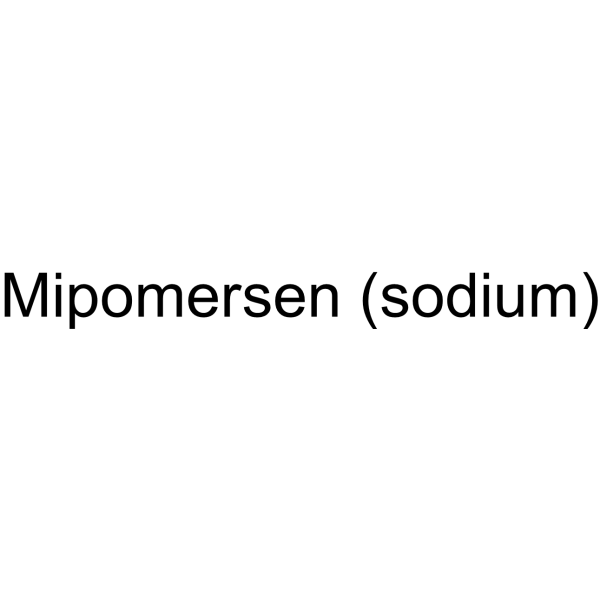
-
- HY-145725
-
|
IONIS 598769 sodium
|
Others
|
Others
|
|
Baliforsen (sodium) is an antisense oligonucleotide (16 nucleotides) designed to target myotonic dystrophy protein kinase (DMPK) mRNA and research myotonic dystrophy.
|
-
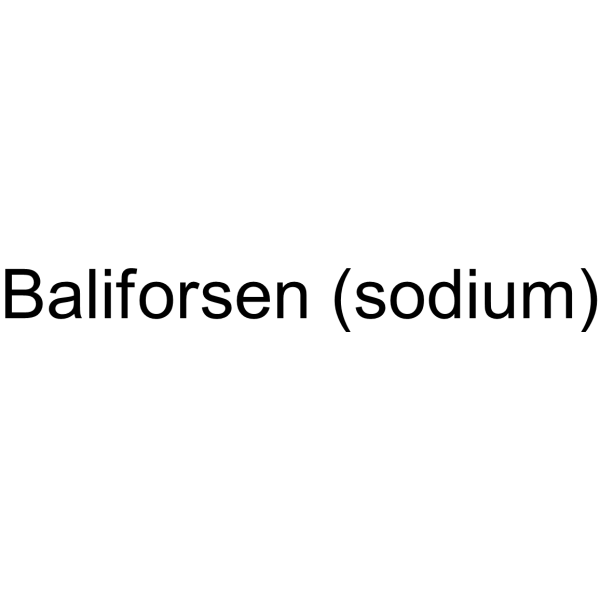
-
- HY-109561
-
|
EYE001; NX1838
|
VEGFR
|
Metabolic Disease
Inflammation/Immunology
|
|
Pegaptanib sodium is an RNA aptamer directed against vascular endothelial growth factor (VEGF)-165. Pegaptanib could be used for the study of neovascular age-related macular degeneration (AMD) .
|
-
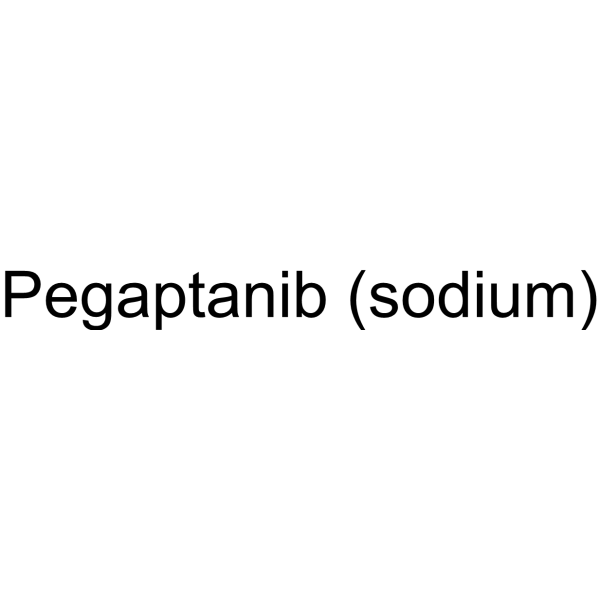
-
- HY-132613
-
|
|
Small Interfering RNA (siRNA)
|
Metabolic Disease
|
|
Lumasiran sodium, an investigational RNA interference (RNAi) therapeutic agent, reduces hepatic oxalate production by targeting glycolate oxidase. Lumasiran sodium reduces urinary oxalate excretion, the cause of progressive kidney failure in primary hyperoxaluria type 1 (PH1) .
|
-
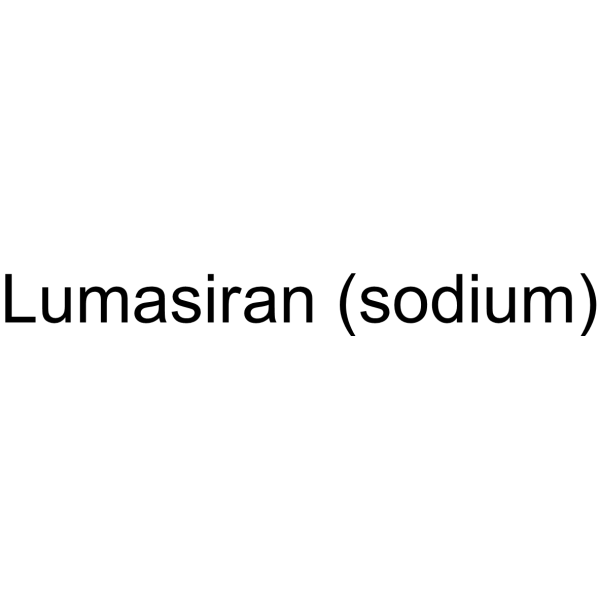
-
- HY-147080
-
|
ARC1905
|
Complement System
|
Others
|
|
Avacincaptad pegol (ARC1905) is an anti-C5 RNA aptamer that inhibits the cleavage of complement factor 5 (C5) into C5a and C5b. Avacincaptad pegol is being used for the study of age-related macular degeneration (AMD).
|
-
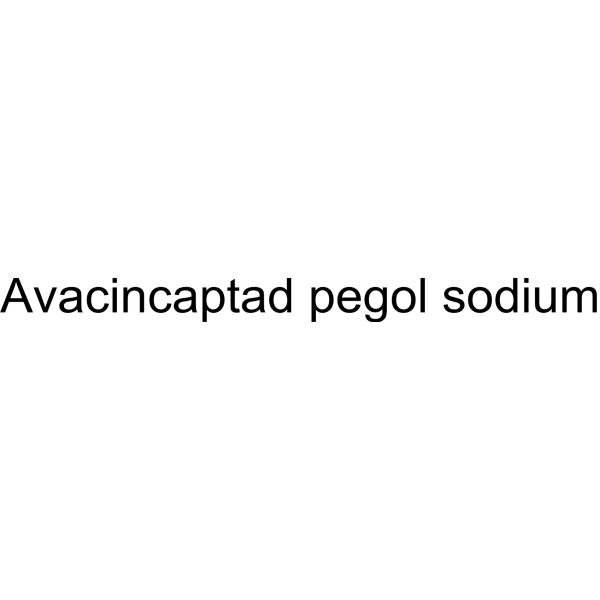
-
- HY-P5772
-
|
|
Sodium Channel
|
Neurological Disease
|
|
Jingzhaotoxin-II, a 32 amino acid residues including two acidic and two basic residues, is a neurotoxin. Jingzhaotoxin-II inhibits voltage-gated sodium channels (VGSC) that significantly slows rapid inactivation of TTX-resistant (TTX-R) VGSC on cardiac myocytes with the IC50 of 0.26 μM .
|
-

-
- HY-B1243
-
|
|
Sodium Channel
|
Neurological Disease
|
|
Propoxycaine hydrochloride inhibits voltage-gated sodium channels, and thereby inhibits the ionic flux required for the initiation and conduction of impulses. Propoxycaine hydrochloride application can lead to a loss of sensation.
|
-
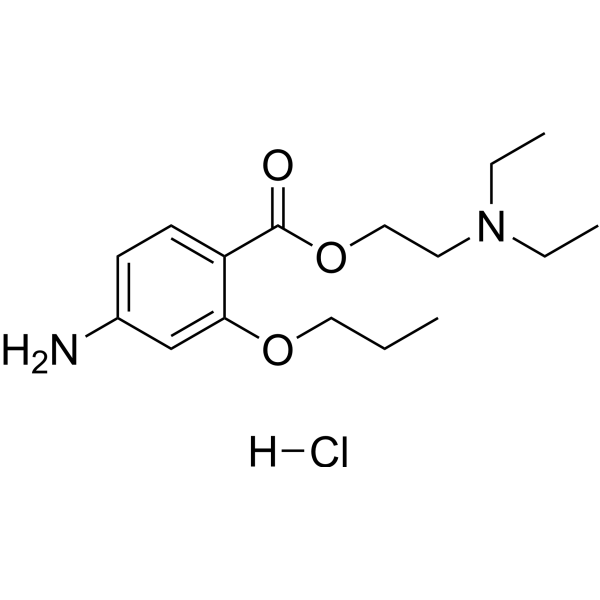
-
- HY-P5942
-
-
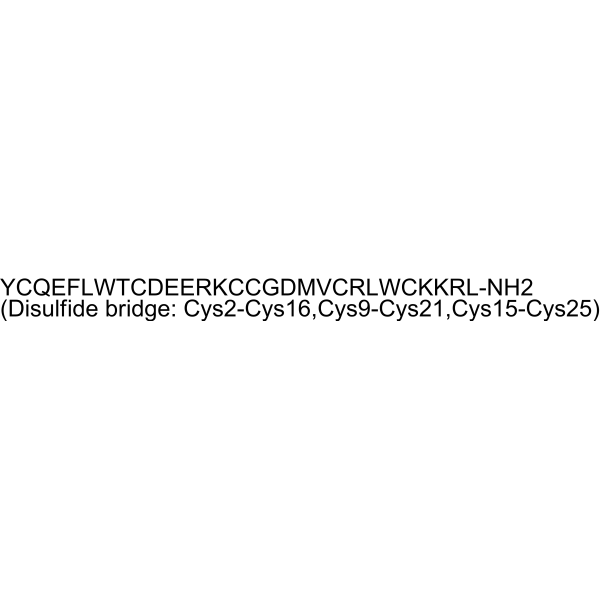
-
- HY-P5943
-
-
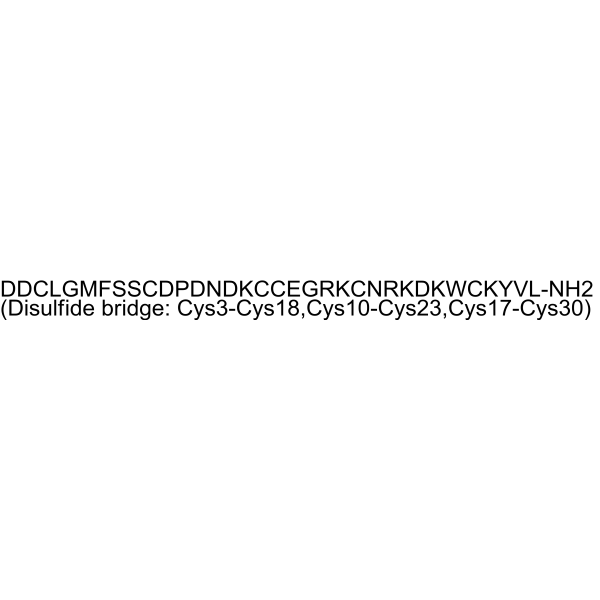
-
- HY-13682A
-
|
MTP-PE sodium hydrate; L-MTP-PE sodium hydrate; CGP 19835 sodium hydrate
|
Others
|
Inflammation/Immunology
Cancer
|
|
Mifamurtide (sodium hydrate) (MTP-PE (sodium hydrate); L-MTP-PE (sodium hydrate); CGP 19835 (sodium hydrate)) is the sodium hydrate of mifamurtide. Mifamurtide is a nonspecific immunomodulator that acts by stimulating immune responses by activating macrophages and monocytes. Mifamurtide is a specific ligand for NOD2 and is used as an insulin sensitizer and may also be used in osteosarcoma research .
|
-
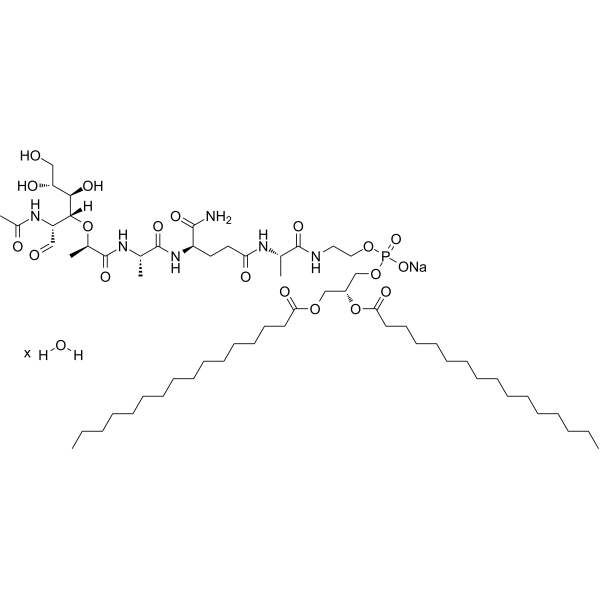
-
- HY-116194
-
-
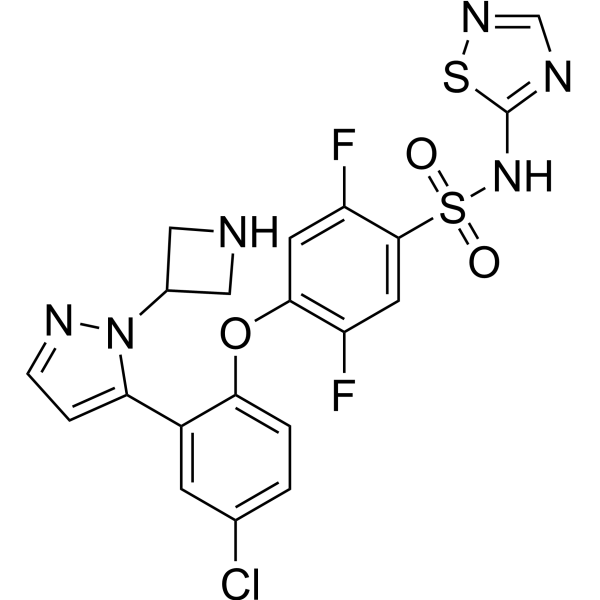
-
- HY-111095S3A
-
|
(R)-2-Hydroxypropionic acid-13C-2 sodium; D-Lactic acid-13C-2 sodium
|
Isotope-Labeled Compounds
|
Others
|
|
D-(-)-Lactic acid-13C-2 (sodium) is a sodium. D-(-)-Lactic acid-13C-2 (sodium) can be used for a variety of biochemical studies.
|
-
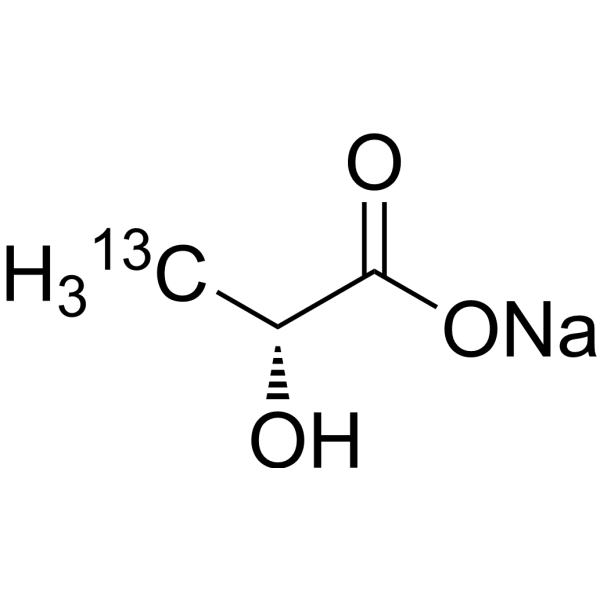
-
- HY-157786
-
|
|
Sodium Channel
|
Neurological Disease
|
|
XPC-5462 is a NaV1.6 and NaV1.2 inhibitor with the IC50s of 10.9 nM and 10.3 nM, respectively. XPC-5462 suppresses epileptiform activity in an ex vivo brain slice seizure model .
|
-
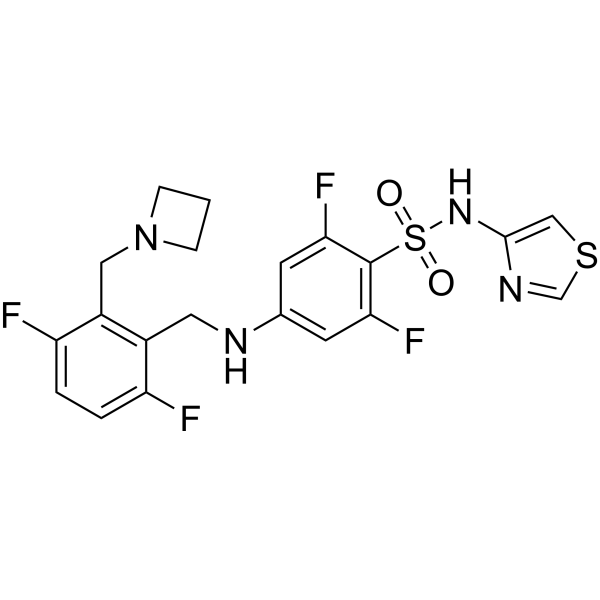
-
- HY-101350
-
-
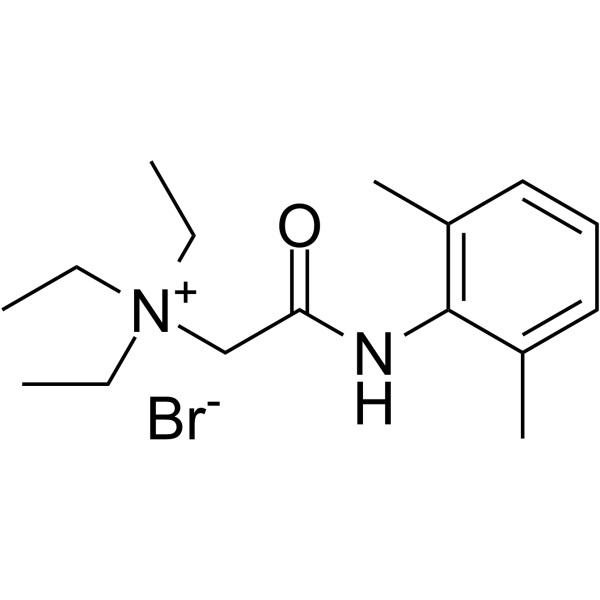
-
- HY-108505
-
-
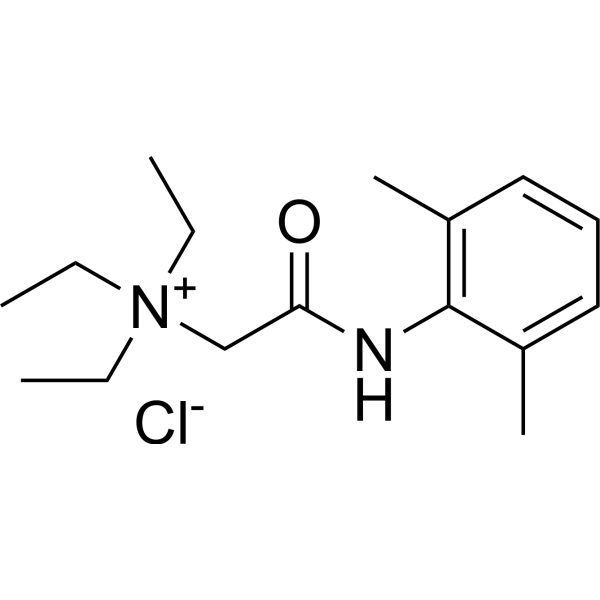
-
- HY-107695
-
|
FPL 12924AA
|
iGluR
Sodium Channel
|
Neurological Disease
|
|
Remacemide hydrochloride (FPL 12924AA), a moderate inhibitor of the Na + channel, is a weak uncompetitive NMDA receptor antagonist with IC50s of 68 μM and 76 μM for MK-801 binding and NMDA currents, respectively . Remacemide hydrochloride is an anticonvulsant agent .
|
-
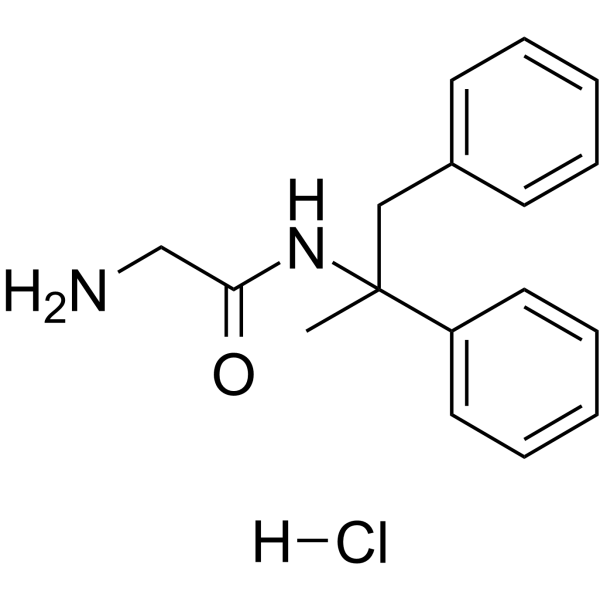
-
- HY-145558
-
-
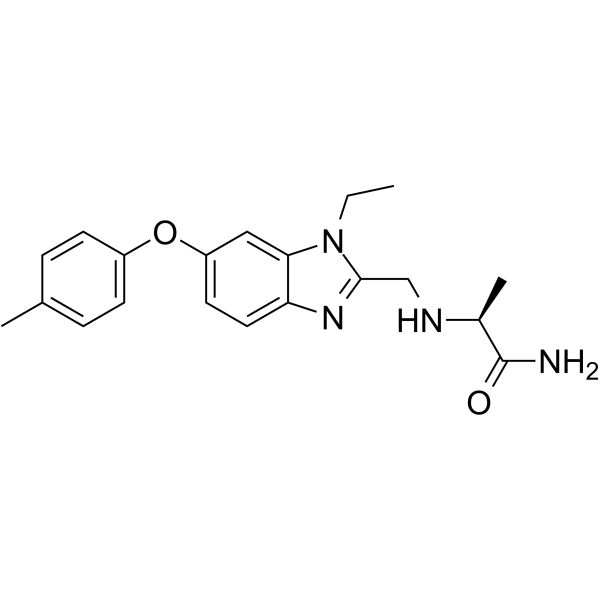
-
- HY-156596
-
|
|
Sodium Channel
|
Neurological Disease
|
|
Aneratrigine is a sodium channel protein type 9 subunit alpha blocker. Aneratrigine can be used for neuropathic pain diseases research .
|
-
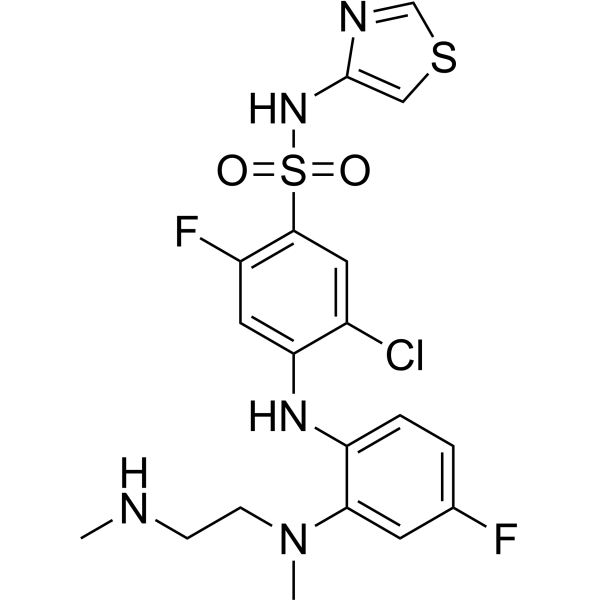
-
- HY-156596A
-
|
|
Sodium Channel
|
Neurological Disease
|
|
Aneratrigine (hydrochloride) is a sodium channel protein type 9 subunit alpha blocker. Aneratrigine (hydrochloride) can be used for neuropathic pain diseases research .
|
-
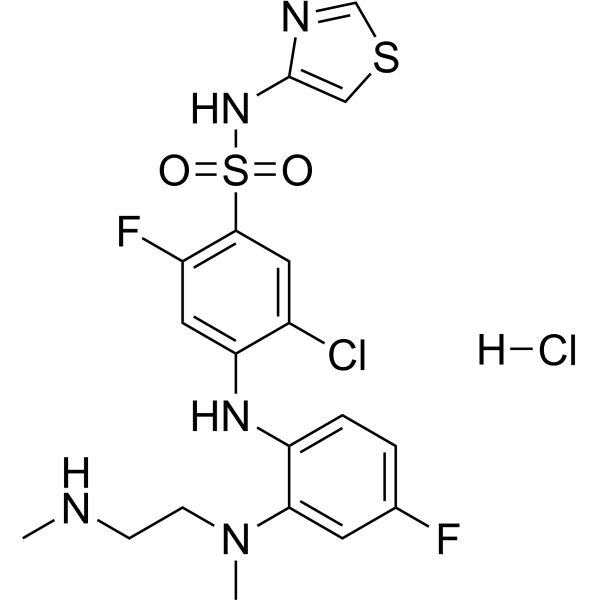
-
- HY-P5180
-
|
|
Sodium Channel
|
Neurological Disease
|
|
Jingzhaotoxin-V is a peptide that inhibits potassium currents in Xenopus laevis oocytes with an IC50 value of 604.2 nM. Jingzhaotoxin-V also inhibits tetrodotoxin-resistant and tetrodotoxin-sensitive sodium currents in rat dorsal root ganglion neurons with IC50 values of 27.6 and 30.2 nM, respectively .
|
-
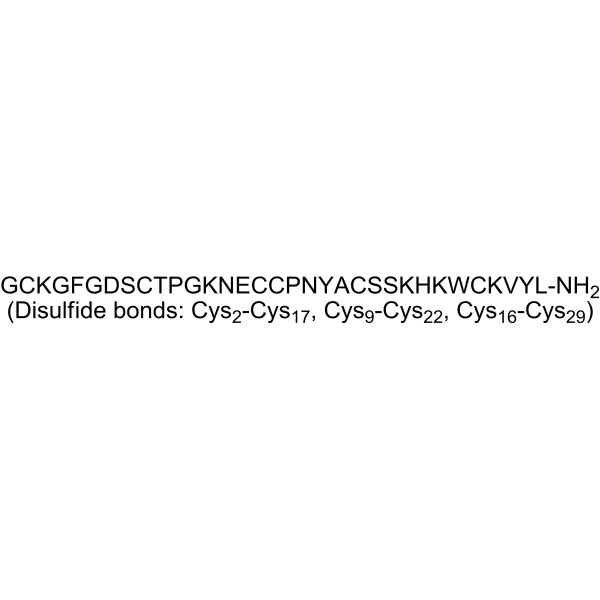
-
- HY-P5808A
-
-
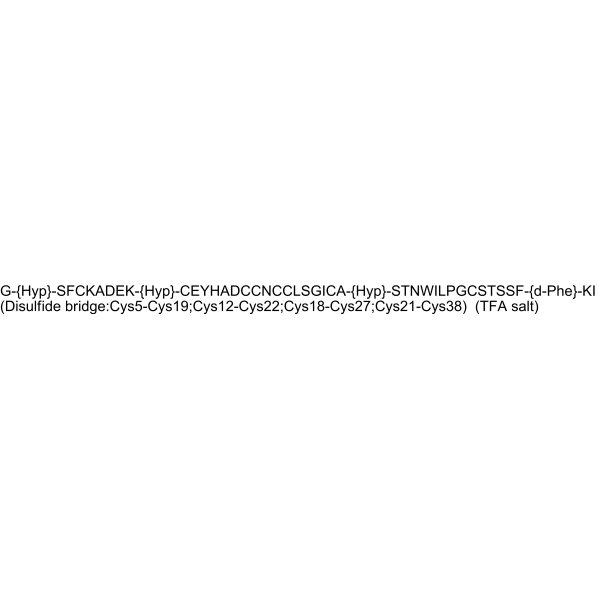
-
- HY-111157
-
-
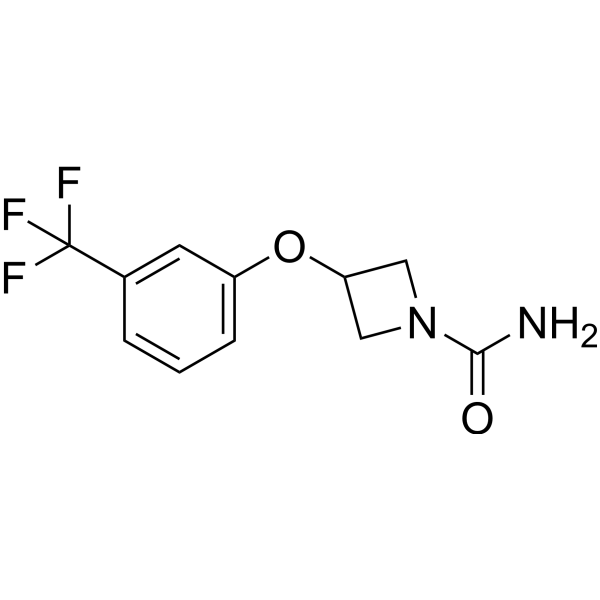
-
- HY-132818
-
|
P-1037
|
Sodium Channel
|
Others
|
|
Idrevloride, an epithelial sodium channel (ENaC) inhibitor (WO2016133967), can be used for the research of skin disorders .
|
-
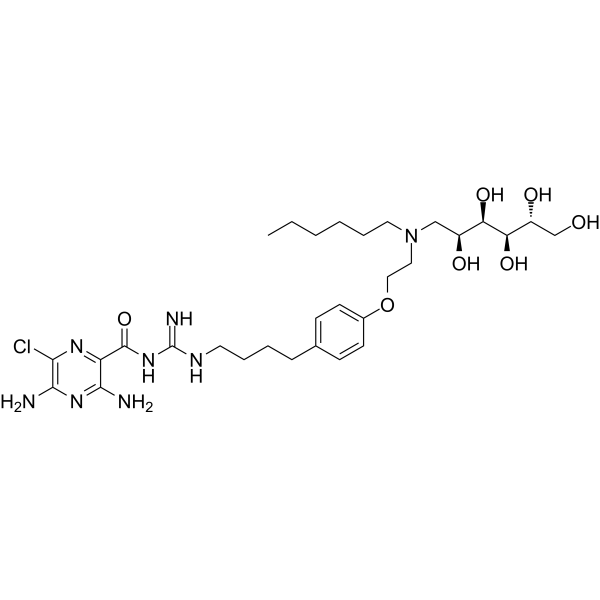
-
- HY-D1442
-
|
|
Fluorescent Dye
|
Others
|
|
SBFI (tetraammonium), the tetraammonium salt of SBFI, is a sodium fluorescence indicator. SBFI (tetraammonium) is sodium-sensitive dye. The excitation wavelength is set 333 nm, and the emission wavelength is 539 nm for SBFI .
|
-
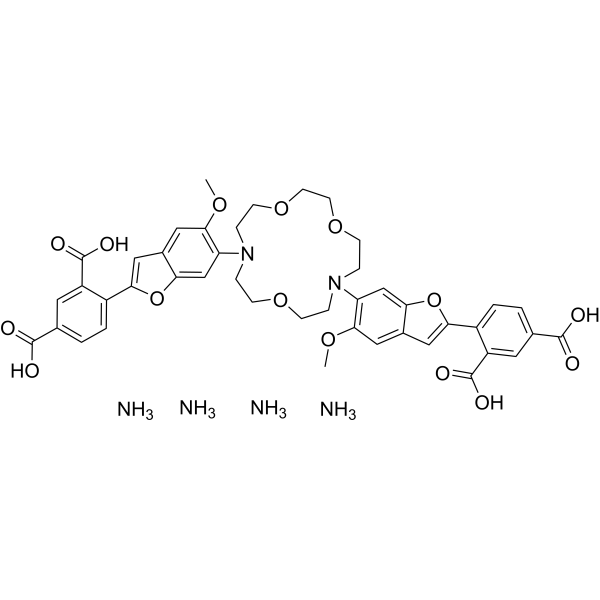
-
- HY-121188
-
|
Dibromo-dodecenyl-methylsulfimide
|
Cytochrome P450
|
Cardiovascular Disease
|
|
DDMS (Dibromo-dodecenyl-methylsulfimide) is a selective 20-HETE production inhibitor. DDMS attenuates the vasodilatory response to sodium nitroprusside (SNP) .
|
-
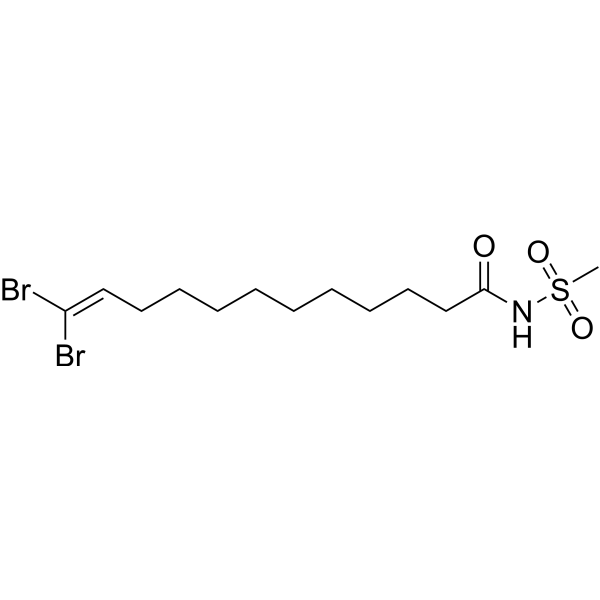
-
- HY-P5773
-
|
|
Sodium Channel
|
Neurological Disease
|
|
Jingzhaotoxin-34, a 35-residue polypeptide, is a neurotoxin. Jingzhaotoxin-34 inhibits tetrodotoxin-sensitive (TTX-S) sodium currents (IC50 of ~85 nM) while having no significant effects on tetrodotoxin-resistant (TTX-R) sodium currents on rat dorsal root ganglion neurons .
|
-

-
- HY-156976
-
|
|
Calcium Channel
|
Cardiovascular Disease
|
|
Sulcardine is a multi-ion channel blocker that can reduce INa and ICa with IC50 values of 26.9 µmol/L and 69.2µ mol/L, respectively. Sulcardine has anti-arrhythmic effects .
|
-
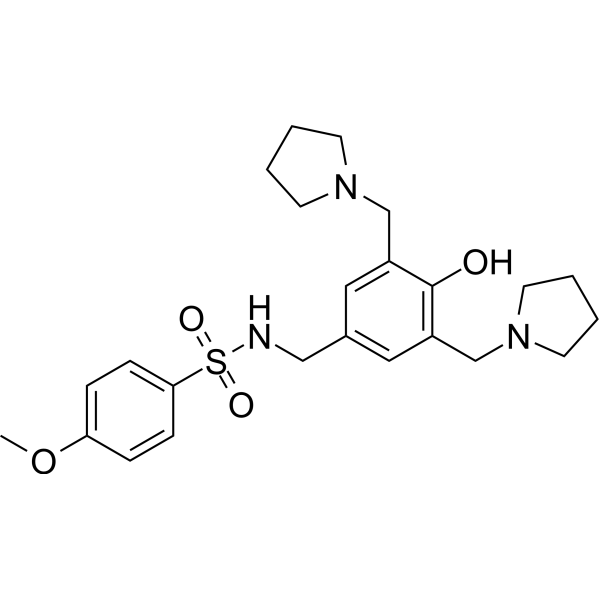
-
- HY-117714
-
|
|
Sodium Channel
|
Neurological Disease
|
|
AZD-3161 is a potent and selective blocker of NaV1.7 channel, with a pIC50 of 7.1. AZD-3161 can be used for the research of neuropathic and inflammatory pain .
|
-
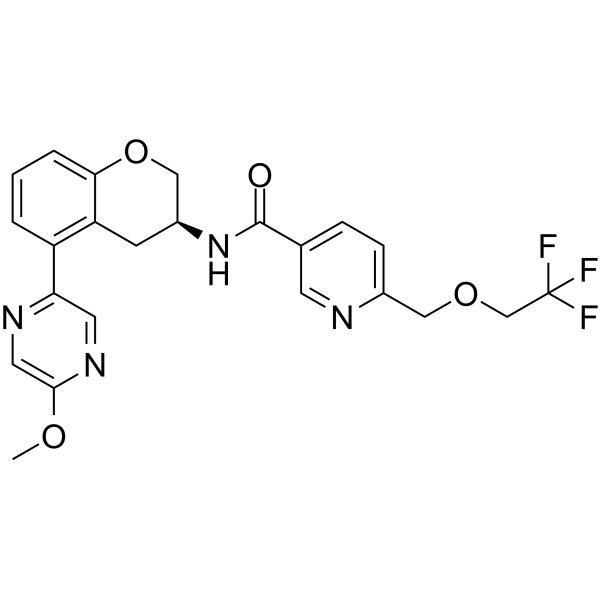
-
- HY-132133
-
-
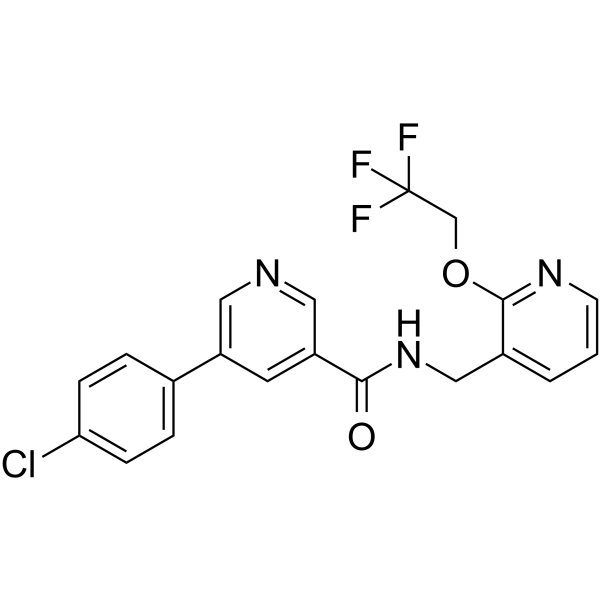
-
- HY-148800
-
|
VX-548
|
Sodium Channel
|
Neurological Disease
|
|
Suzetrigine (VX-548) is an orally active and highly selective NaV1.8 inhibitor that acts as an analgesic. Suzetrigine is also a blocker of sodium channel protein type 10 subunit alpha .
|
-
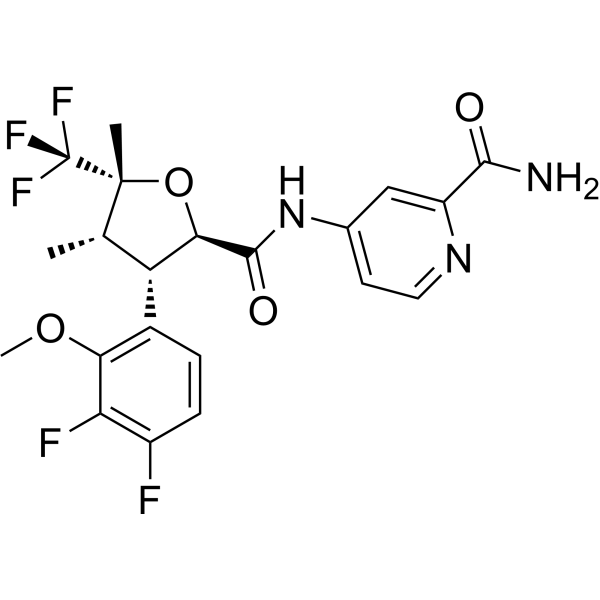
-
- HY-P1219
-
|
β-TRTX-Cj1α
|
Sodium Channel
|
Neurological Disease
|
|
Jingzhaotoxin-III is a potent and selective blocker of Nav1.5 channels, with an IC50 of 348 nM, and shows no effect on other sodium channel isoforms. Jingzhaotoxin-III can selectively inhibit the activation of cardiac sodium channel but not neuronal subtypes, and hopefully represents an important ligand for discriminating cardiac VGSC subtype .
|
-
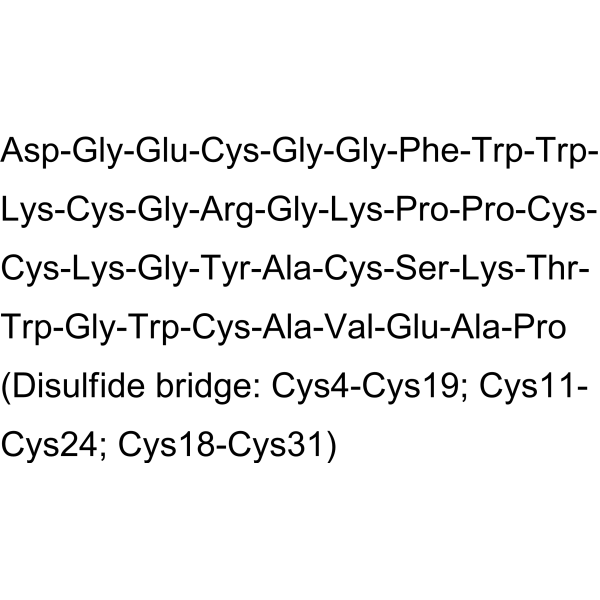
-
- HY-B1402B
-
|
Hydrocortisone 21-hemisuccinate sodium
|
Glucocorticoid Receptor
|
Metabolic Disease
|
|
Hydrocortisone hemisuccinate sodium is an orally active physiological glucocorticoid. Hydrocortisone hemisuccinate sodium inhibits proinflammatory cytokine activity, with IC50s of 6.7 and 21.4 μM for IL-6 and IL-3, respectively. Hydrocortisone hemisuccinate sodium can be used for the research of ulcerative colitis (UC) .
|
-
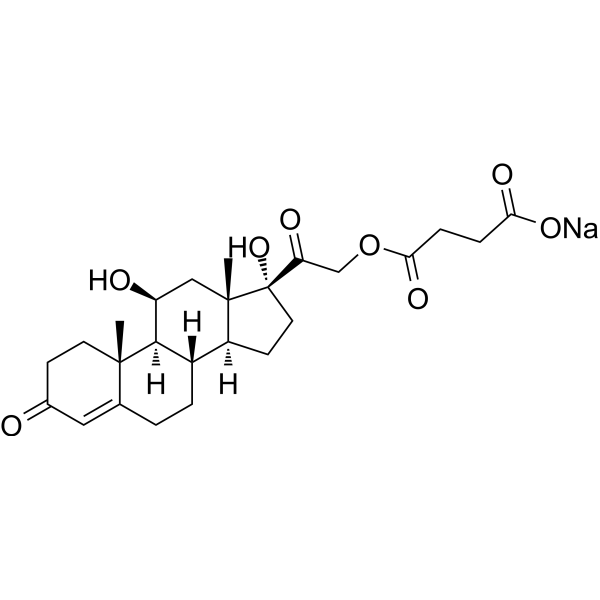
-
- HY-P1952A
-
|
|
Sodium Channel
|
Neurological Disease
|
|
µ-Conotoxin-CnIIIC acetate, a 22-residue conopeptide, is a potent antagonist of the voltage-gated NaV1.4 sodium channel with an IC50 of 1.3 nM acting at the neuromuscular junction. µ-Conotoxin-CnIIIC acetate has myorelaxant and analgesic effects .
|
-
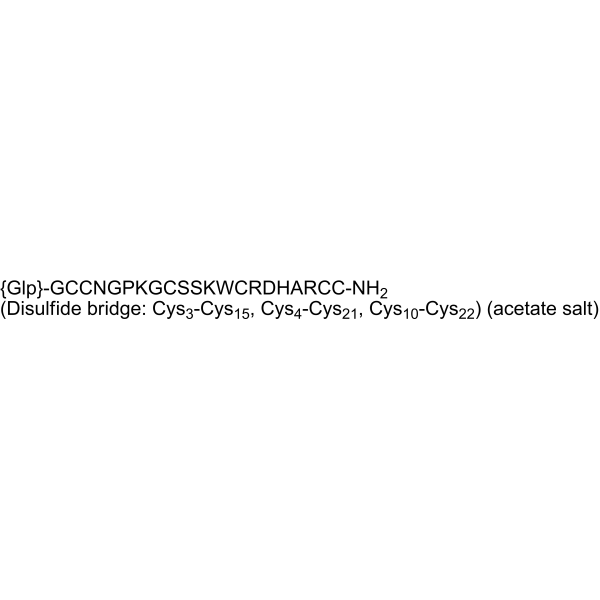
-
- HY-P5770
-
|
|
Sodium Channel
|
Neurological Disease
|
|
Jingzhaotoxin-V, a 29-residue polypeptide, is derived from the venom of the spider Chilobrachys jingzhao. Jingzhaotoxin-V inhibits tetrodotoxin-resistant and tetrodotoxin-sensitive sodium currents in rat dorsal root ganglion neurons with IC50 values of 27.6 nM and 30.2 nM, respectively. Jingzhaotoxin-V also inhibits Kv4.2 potassium currents expressed in Xenpus Laevis oocytes (IC50 of 604.2 nM) .
|
-

-
- HY-P5771
-
|
|
Sodium Channel
|
Neurological Disease
|
|
Jingzhaotoxin-IX, a C-terminally amidated peptide composed of 35 amino acid residues, is a neurotoxin. Jingzhaotoxin-IX inhibits voltage-gated sodium channels (both tetrodotoxin-resistant and tetrodotoxin-sensitive isoforms) and Kv2.1 channel. Jingzhaotoxin-IX has no effect on delayed rectifier potassium channel Kv1.1, 1.2 and 1.3 .
|
-
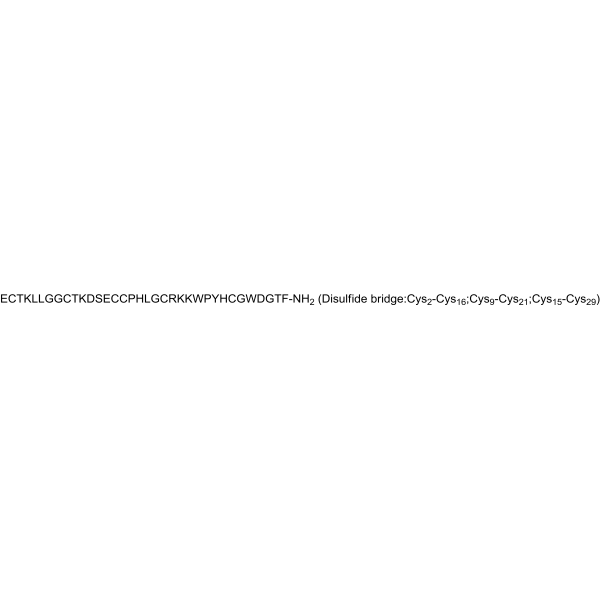
-
- HY-P5179
-
|
HWTX-I
|
Calcium Channel
Sodium Channel
|
Neurological Disease
|
|
Huwentoxin I (HWTX-I) is a peptide toxin that inhibits voltage-gated sodium channels and N-type calcium channels. Huwentoxin I inhibits sodium channels in rat hippocampus and cockroach dorsal unpaired median (DUM) neurons with IC50 values of 66.1 and 4.80 nM, respectively .
|
-
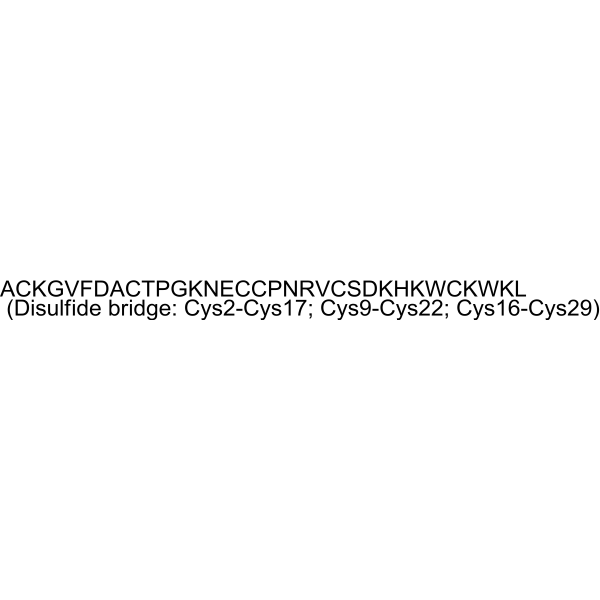
-
- HY-P5177
-
-
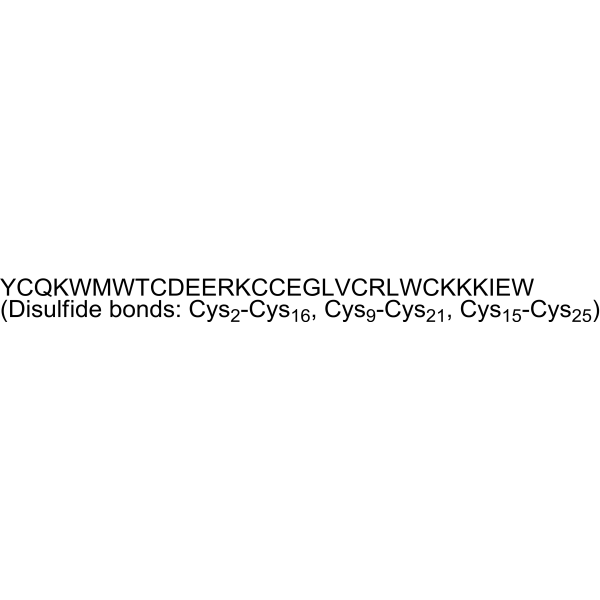
-
- HY-17507E
-
|
|
Proton Pump
Bacterial
|
Infection
|
|
S-Pantoprazole (sodium trihydrate) is related to Pantoprazole (HY-17507) that plays an important roles in gastric acid secretion disorder-related diseases, or as proton pump inhibitor .
|
-
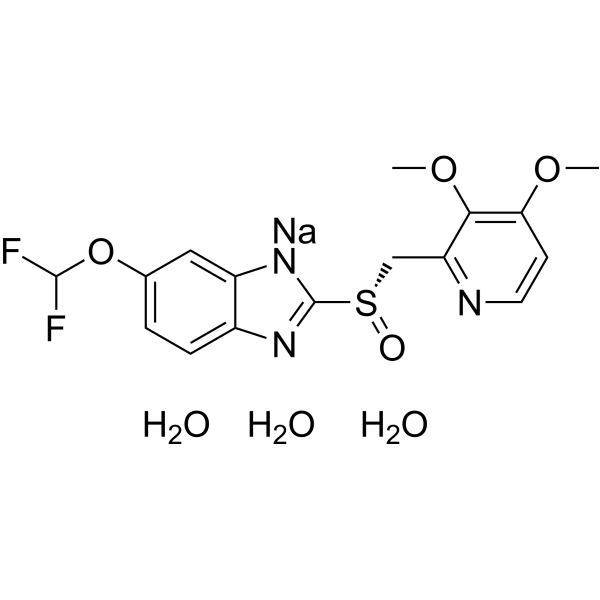
-
- HY-132607A
-
|
CEBPA-51 sodium
|
MicroRNA
|
Inflammation/Immunology
Cancer
|
|
MTL-CEBPA (sodium) is the sodium form of MTL-CEBPA (HY-132607). MTL-CEBPA (sodium) is a small activating RNA targeting for upregulation of C/EBPα. MTL-CEBPA (sodium) has anti-inflammatory and anti-cancer activity .
|
-
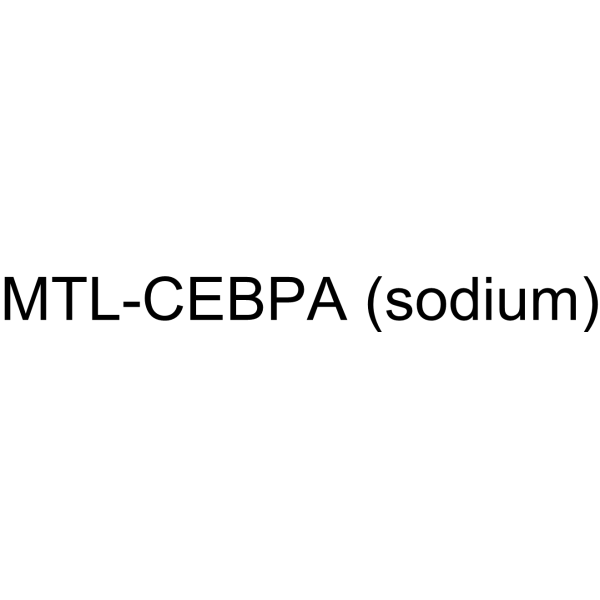
-
- HY-160208
-
-
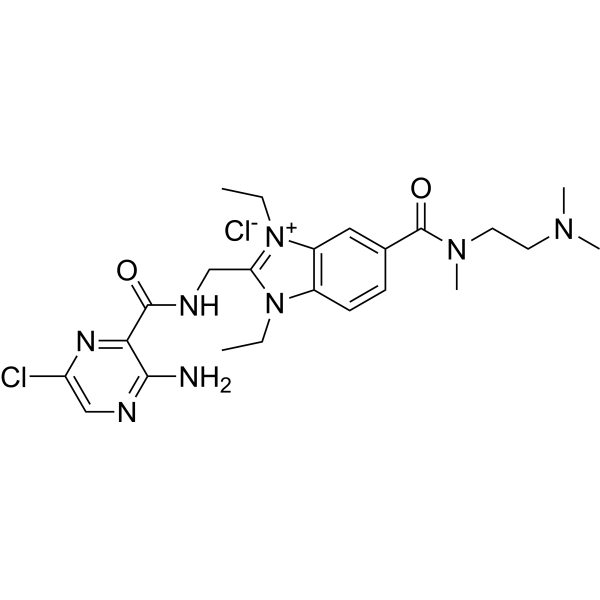
-
- HY-162093
-
|
|
Amyloid-β
|
Neurological Disease
|
|
Aβ1–42 aggregation inhibitor 2 (compound 7c) is a potent inhibitor of? Aβ1-42 aggregation that plays an important role in Alzheimer's disease research. Aβ1–42 aggregation inhibitor 2 displays excellent antioxidant, metal ions chelating, oxidative stress alleviation, neuroprotective and anti-neuroinflammatory activities .
|
-
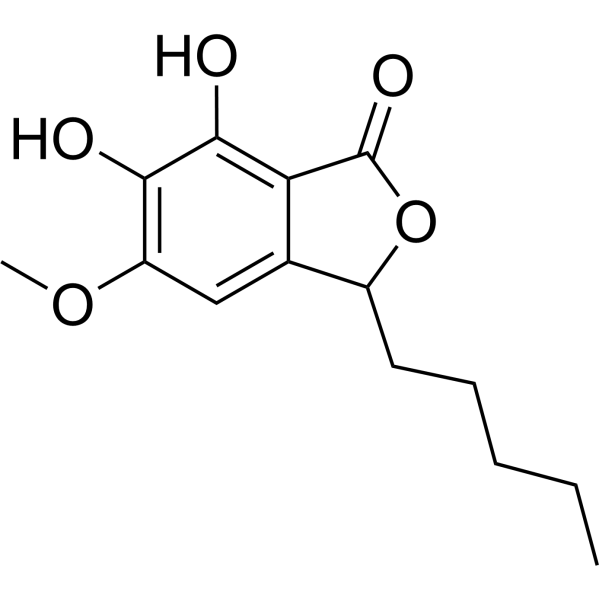
-
- HY-162246
-
|
|
Sodium Channel
|
Cardiovascular Disease
Neurological Disease
|
|
Nav1.8-IN-5 (Example 1) is a voltage-gated sodium channel Nav1.8 inhibitor. Nav1.8-IN-5 can be used for Nav1.8-mediated diseases, such as pain and pain-related disorders, as well as cardiovascular diseases (such as atrial fibrillation) research .
|
-
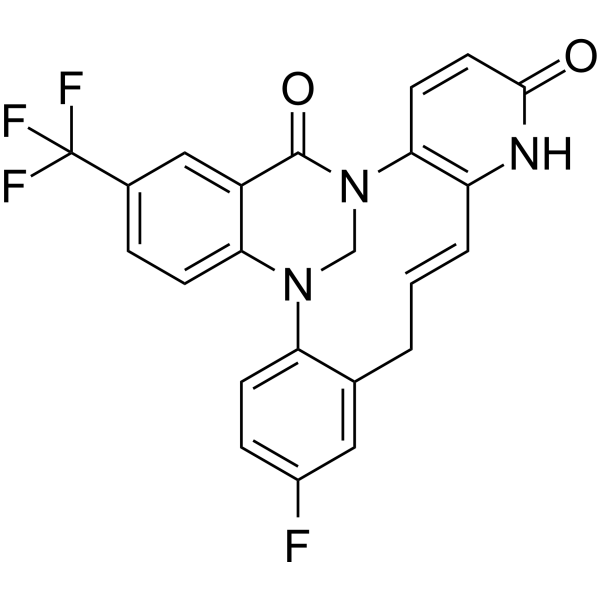
- HY-B0114
-
|
GP 47680
|
Sodium Channel
Apoptosis
|
Neurological Disease
Cancer
|
|
Oxcarbazepine is a sodium channel blocker . Oxcarbazepine significantly inhibits glioblastoma cell growth and induces apoptosis or G2/M arrest in glioblastoma cell lines . Anti-cancer and anticonvulsant effects .
|
-
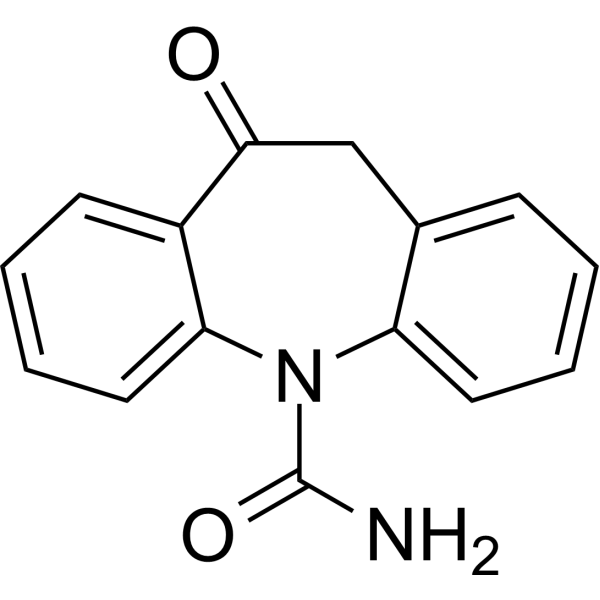
- HY-122001
-
|
|
Sodium Channel
|
Neurological Disease
|
|
PF-05186462 is a potent and selective inhibitor of human Nav1.7 voltage-dependent sodium channel, with an IC50 of 21 nM. PF-05186462 shows significant selectivity for Nav1.7 versus other sodium channels (Nav 1.1, 1.2, 1.3, 1.4, 1.5, 1.6, and 1.8). PF-05186462 can be used for the research of acute or chronic pain .
|
-
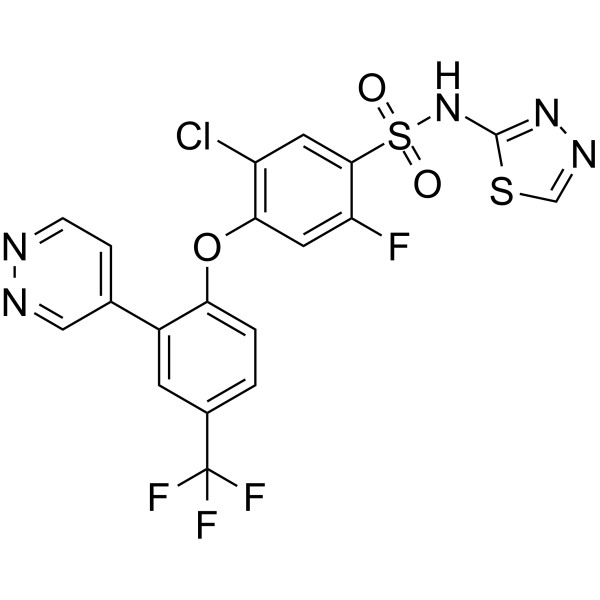
- HY-10449A
-
|
TS 071 hydrate
|
SGLT
|
Metabolic Disease
|
|
Luseogliflozin (TS 071) hydrate is a selective potent and orally active second-generation sodium-glucose co-transporter 2 (SGLT2) inhibitor with an IC50 of 2.26 nM. Luseogliflozin hydrate can be used for the research of type 2 diabetes mellitus (T2DM) .
|
-
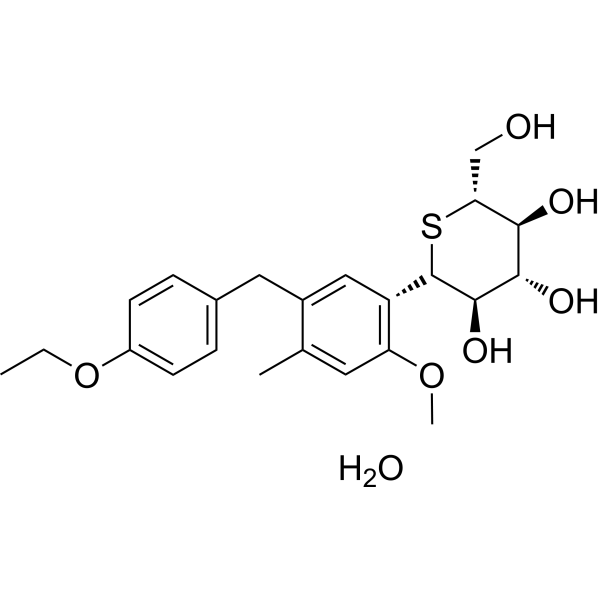
- HY-112472
-
|
|
Sodium Channel
|
Metabolic Disease
|
|
S3969 is a potent and reversible activator of the human epithelial sodium channel (hENaC). The apparent EC50 for S3969 activation of hENaC is 1.2 μm .
|
-
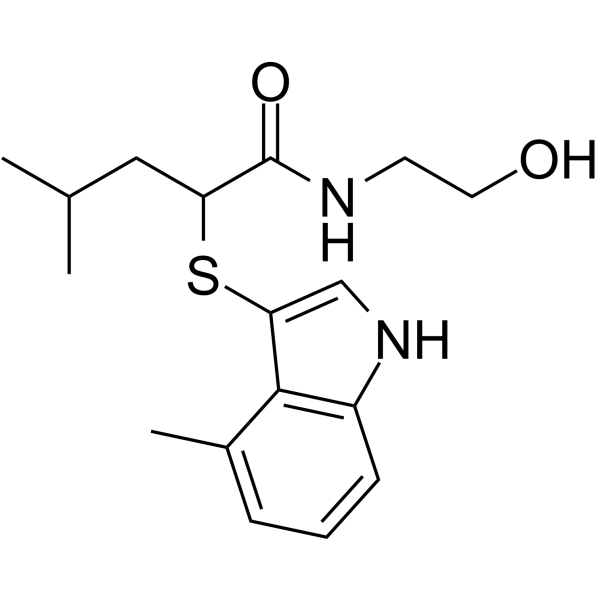
- HY-100616
-
|
cis-1-Aminocyclobutane-1,3-dicarboxylic acid
|
Others
|
Neurological Disease
|
|
cis-ACBD is a potent and selective inhibitor of the high-affinity, Na +-dependent plasma membrane glutamate transporter. cis-ACBD is a glutamate reuptake inhibitor. cis-ACBD also acts as linear competitive inhibitor of the uptake of D-[3H]aspartate .
|
-
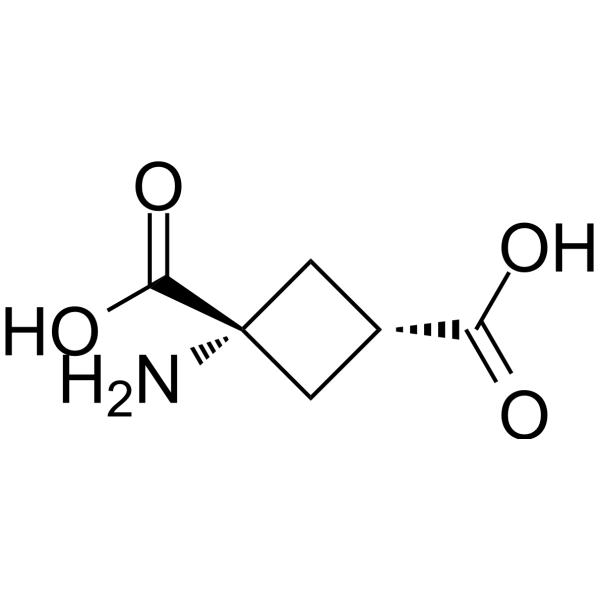
- HY-P5868
-
|
|
Sodium Channel
|
Neurological Disease
|
|
mHuwentoxin-IV is a naturally modified Huwentoxin-IV (HY-P1220). mHuwentoxin-IV inhibits tetrodotoxin-sensitive (TTX-S) voltage-gated sodium channels of dorsal root ganglion neurons with an IC50 of 54.16 nM. mHuwentoxin-IV inhibition of tetrodotoxin-sensitive sodium channels is not reversed by strong depolarization voltages .
|
-

- HY-100834A
-
|
5,7-DCKA sodium
|
iGluR
|
Neurological Disease
|
|
5,7-Dichlorokynurenic acid (sodium) is the sodium form of 5,7-Dichlorokynurenic acid (HY-100834). 5,7-Dichlorokynurenic acid is a selective and competitive antagonist of the glycine site on the NMDA receptor with a KB of 65 nM. 5,7-Dichlorokynurenic acid, a derivative of kynurenic acid, reduces NMDA-induced neuron injury in rat cortical cell cultures .
|
-
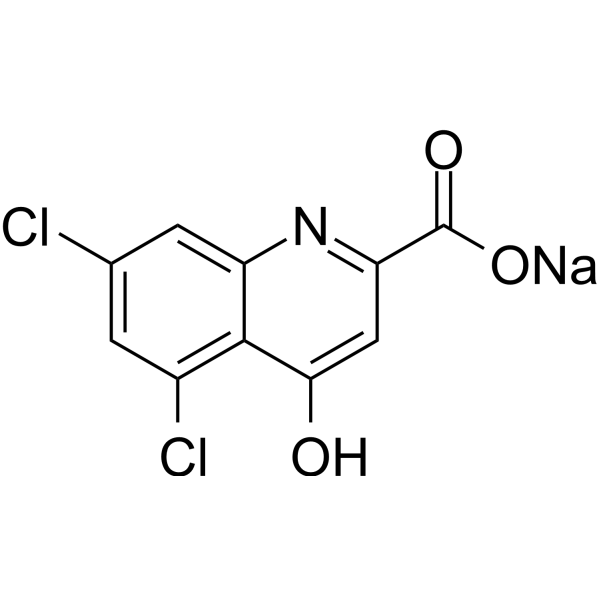
- HY-N8716
-
-
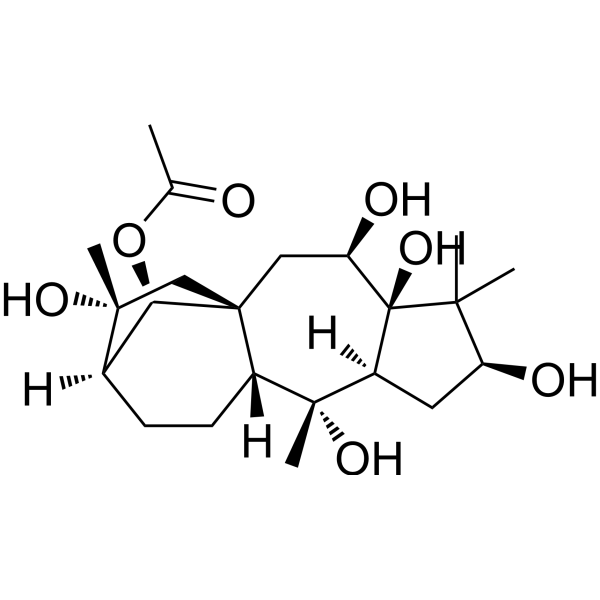
- HY-N2877
-
-
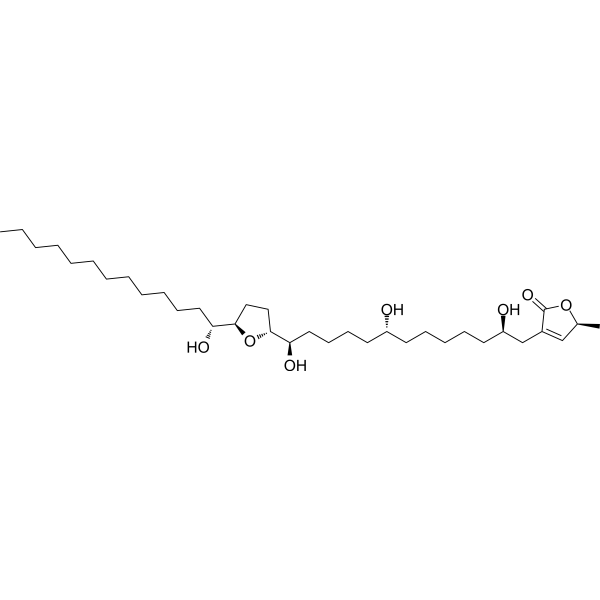
- HY-N6691
-
|
3-Veratroylveracevine
|
Sodium Channel
|
Neurological Disease
|
|
Veratridine (3-Veratroylveracevine) is a plant neurotoxin, a voltage-gated sodium channels (VGSCs) agonist. Veratridine inhibits the peak current of Nav1.7, with an IC50 of 18.39 µM. Veratridine regulates sodium ion channels mainly by activating sodium ion channels, preventing channel inactivation and increasing sodium ion flow .
|
-
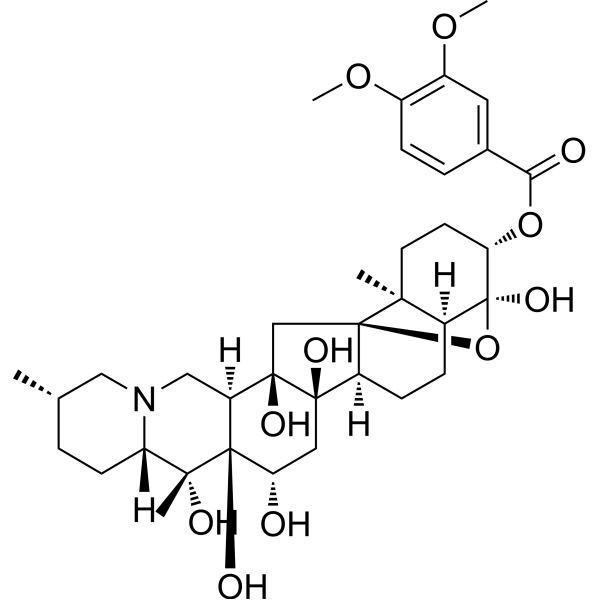
- HY-N3990
-
|
(-)-Hardwikiic acid
|
Sodium Channel
|
Infection
Neurological Disease
|
|
Hardwickiic acid ((-)-Hardwikiic acid) is an antinociceptive compound that blocks Tetrodotoxin-sensitive voltage-dependent sodium channels. Hardwickiic acid shows insecticidal activity .
|
-
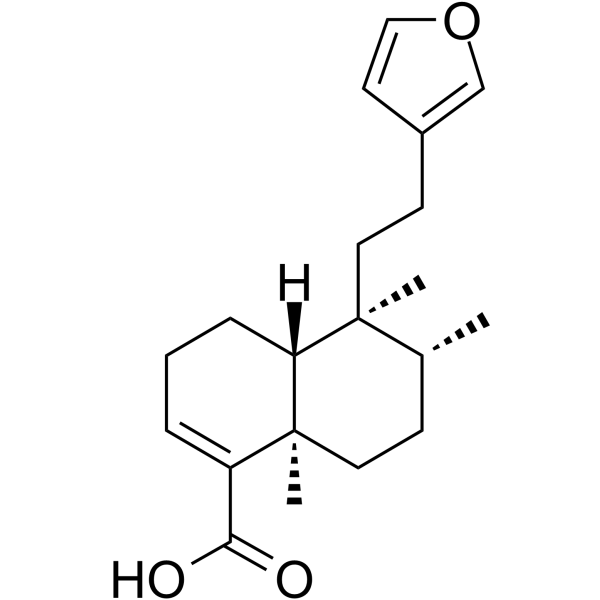
- HY-147423
-
-
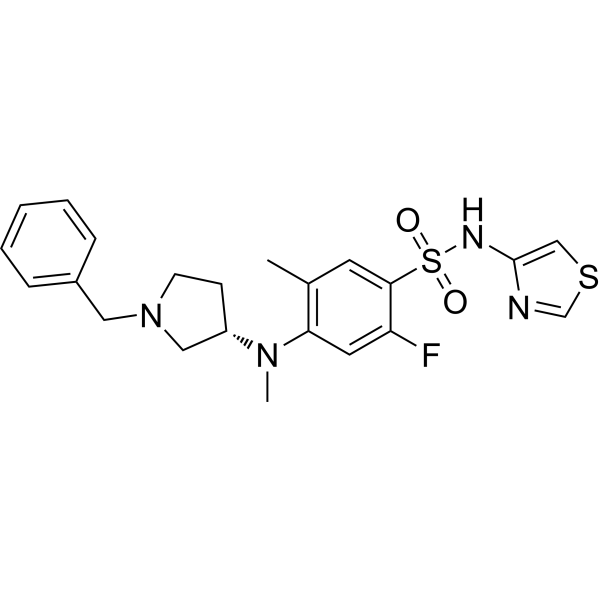
- HY-P3777
-
|
|
Potassium Channel
|
Neurological Disease
|
|
β-Bag cell peptide is a neuroactive peptide. β-Bag cell peptide elevates cyclic AMP levels in the bag cell neurons. β-Bag cell peptide decreases the amplitudes of the voltage-dependent potassium currents .
|
-
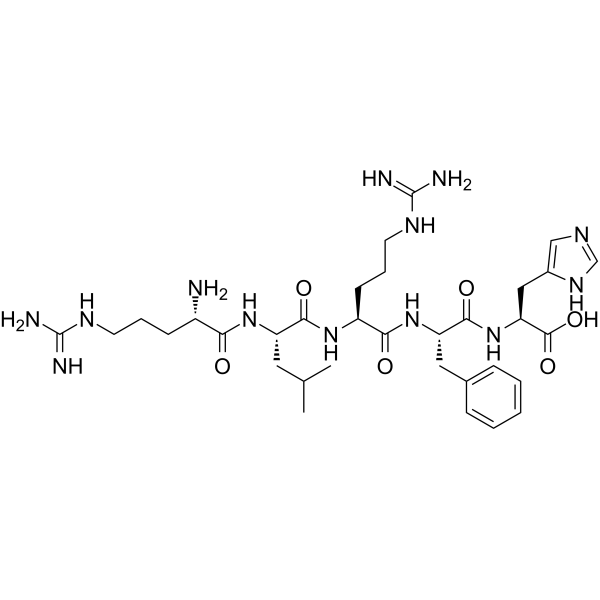
- HY-P5184
-
|
HNTX-IV
|
Sodium Channel
|
Neurological Disease
|
|
Hainantoxin-IV is a specific antagonist of Sodium Channel, targeting to tetrodotoxin-sensitive (TTX-S) voltage-gated sodium channels. His28 and Lys32 are the key resiudes of Hainantoxin-IV for binding with target, while Hainantoxin-IV adopts an inhibitor cystine knot motif .
|
-
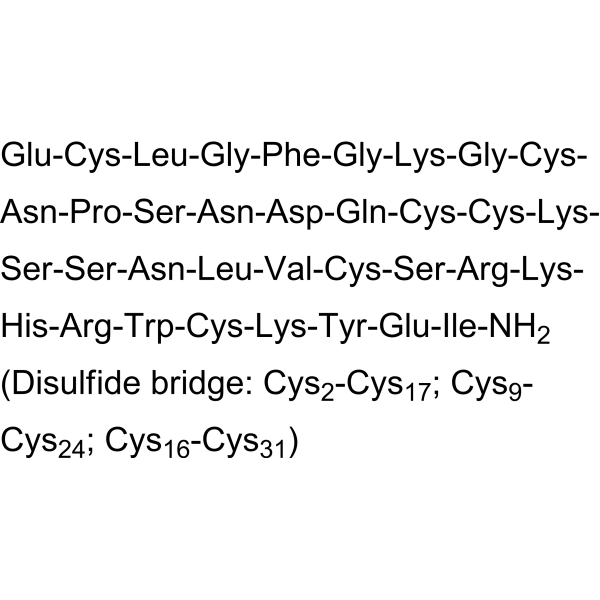
- HY-114918
-
|
|
TSH Receptor
|
Endocrinology
|
|
MS438 is a potent thyrotropin receptor (TSHR) agonist with an EC50 of 53 nM. MS438 binds to the serpentine portion of the TSHR. MS438 induces T4 secretion in mice .
|
-
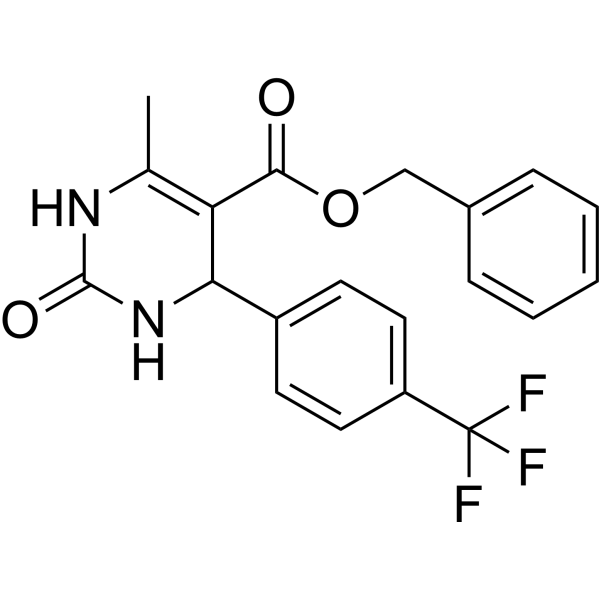
- HY-108622
-
-
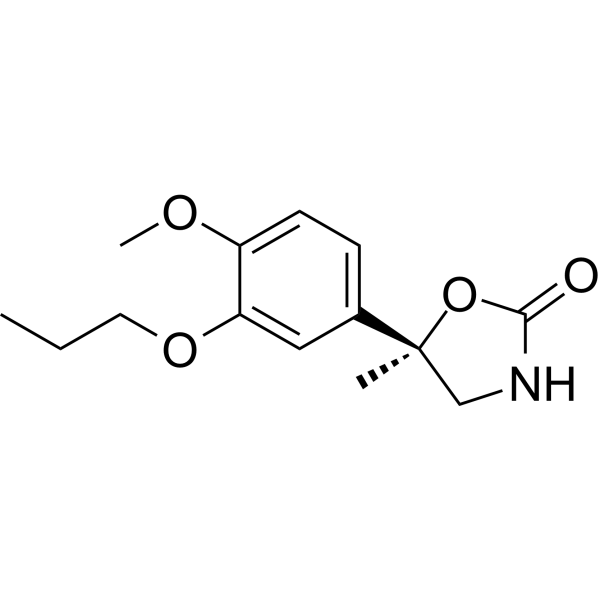
- HY-161272
-
|
|
Sodium Channel
|
Neurological Disease
|
|
Nav1.8-IN-6 (Compound 2j) is a novel pyridinone amide Nav1.8 channel inhibitor. The IC50 values in the resting state and semi-activated state are 513.33 and 471.81 nM, respectively. Nav1.8-IN-6 has analgesic activity .
|
-
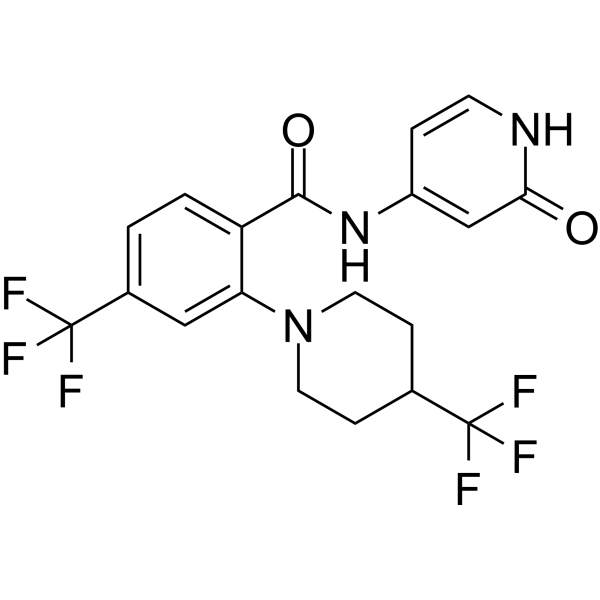
- HY-162347
-
|
|
Sodium Channel
|
Neurological Disease
|
|
Nav1.7-IN-13 (compound 3g) is a sodium channel inhibitor that significantly inhibits Veratridine (HY-N6691)-induced neuronal activity. Nav1.7-IN-13 inhibits total Na+ current in DRG neurons in a concentration-dependent manner; slows down the activation of Navs. Nav1.7-IN-13 significantly alleviated mechanical pain behavior in a rat model of nerve injury (SNI) and had analgesic activity .
|
-

- HY-11079
-
|
|
Sodium Channel
|
Neurological Disease
Inflammation/Immunology
|
|
A-803467 is a potent and selective tetrodotoxin-resistant Nav1.8 sodium channel blocker (IC50=8 nM). A-803467 has shown significant anti-nociception in neuropathic and inflammatory pain models. A-803467 enhances the chemosensitivity of conventional anticancer agents through interaction with the ATP-binding cassette subfamily G member 2 (ABCG2) transporter .
|
-
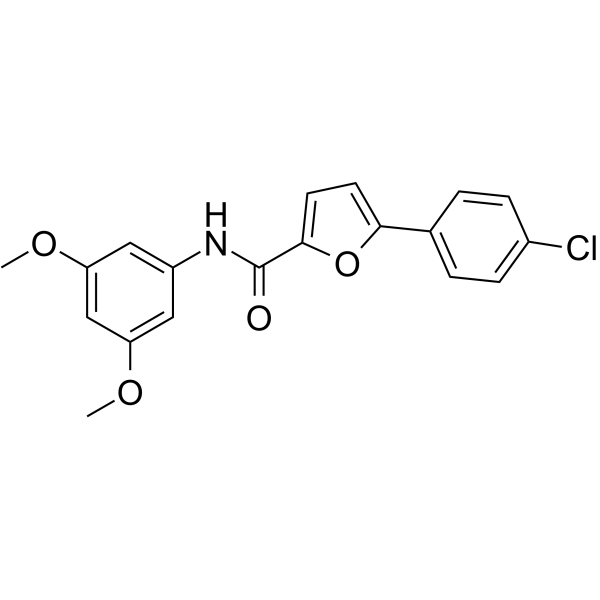
- HY-130187A
-
|
|
Bacterial
|
Infection
|
|
Sapienic acid sodium is a fatty acid commonly found on the skin and in mucosa. Sapienic acid sodium has variable antimicrobial activities against Gram-positive and Gram-negative bacteria found on the skin and in the oral cavity. Sapienic acid sodium is active against Streptococcus sanguinis, Streptococcus mitis and Fusobacterium nucleatum with MBC values of 31.3 μg/mL, 375.0 μg/mL and 93.8 μg/mL, respectively .
|
-
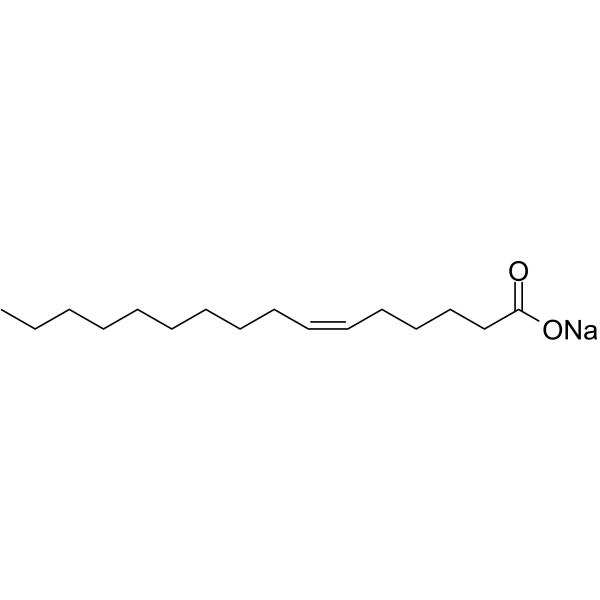
- HY-P1218A
-
|
|
Sodium Channel
|
Neurological Disease
|
|
Phrixotoxin 3 TFA is a potent blocker of voltage-gated sodium channels, with IC50s of 0.6, 42, 72, 288, 610 nM for NaV1.2, NaV1.3, NaV1.4, NaV1.1 and NaV1.5, respectively. Phrixotoxin 3 TFA modulates voltage-gated sodium channels with properties similar to those of typical gating-modifier toxins, both by causing a depolarizing shift in gating kinetics and by blocking the inward component of the sodium current .
|
-
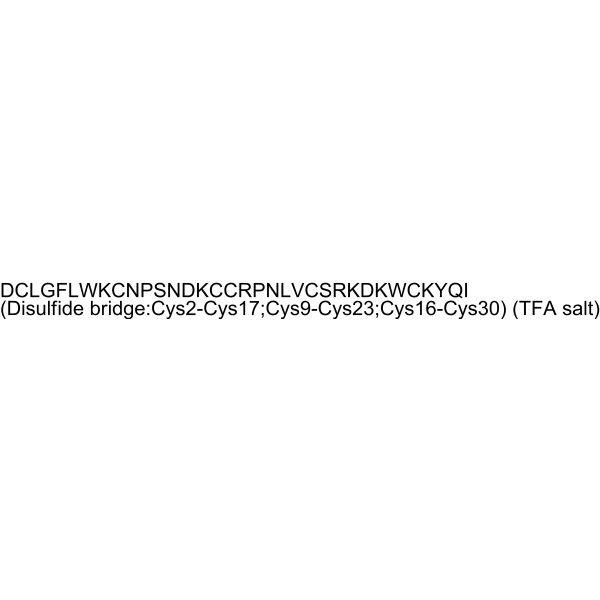
- HY-P1218
-
|
|
Sodium Channel
|
Neurological Disease
|
|
Phrixotoxin 3 is a potent blocker of voltage-gated sodium channels, with IC50s of 0.6, 42, 72, 288, 610 nM for NaV1.2, NaV1.3, NaV1.4, NaV1.1 and NaV1.5, respectively. Phrixotoxin 3 modulates voltage-gated sodium channels with properties similar to those of typical gating-modifier toxins, both by causing a depolarizing shift in gating kinetics and by blocking the inward component of the sodium current .
|
-
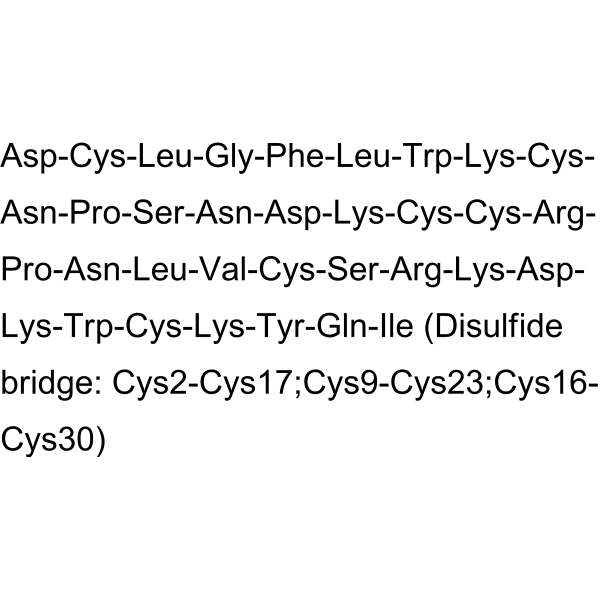
- HY-113325A
-
|
|
Endogenous Metabolite
|
Others
|
|
NADP sodium hydrate, a β-Nicotinamide adenine dinucleotide phosphate sodium salt, is a redox cofactor. NADP sodium hydrate is a key cofactor for electron transfer in the metabolism, being alternately oxidized (NADP +) and reduced (NADPH) .
|
-
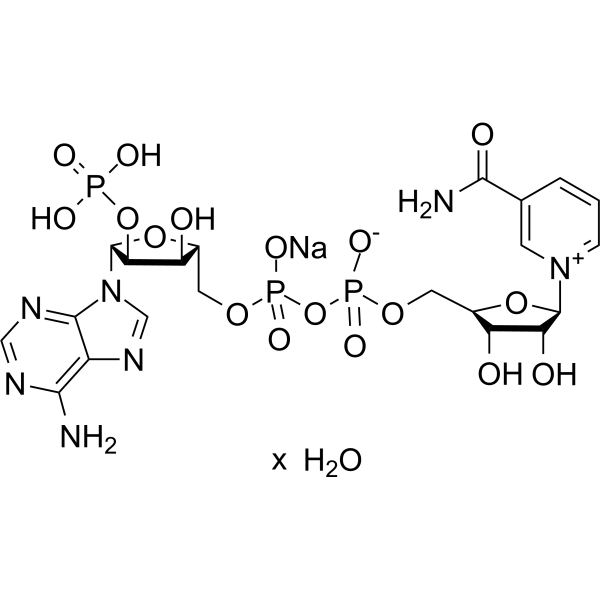
- HY-B2227C
-
|
Lactic acid potassium
|
Bacterial
|
Infection
Others
|
|
Lactate (Lactic acid) potassium is used as a sodium chloride substitute in the elaboration of dry meat products. Lactate potassium (56%) and sodium diacetate (4%) mixture inhibit the development of L. sake and L. monocytogenes bacteria at 4℃ to extend the shelf life of food .
|
-
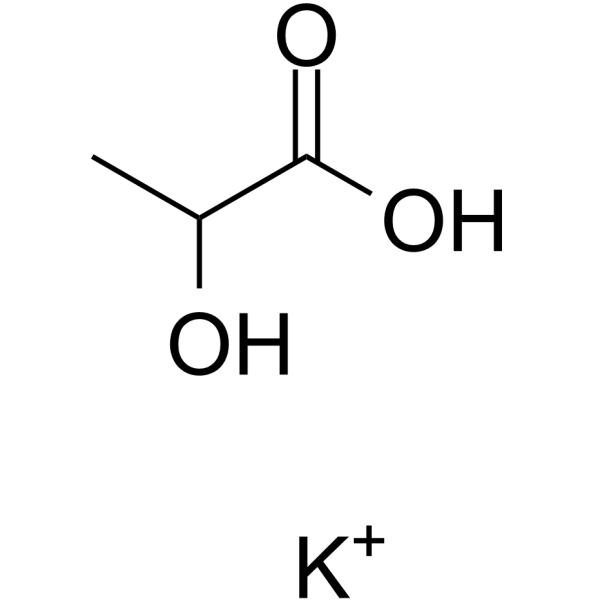
- HY-109542
-
|
|
Others
|
Metabolic Disease
|
|
Cyclopenthiazide is a benzothiadiazine diuretic with antihypertensive properties. Cyclopenthiazide exerts a diuretic effect by inhibiting the reabsorption of sodium chloride and water at the distal renal tubules. Cyclopenthiazide increases the excretory capacity of the rat kidney .
|
-
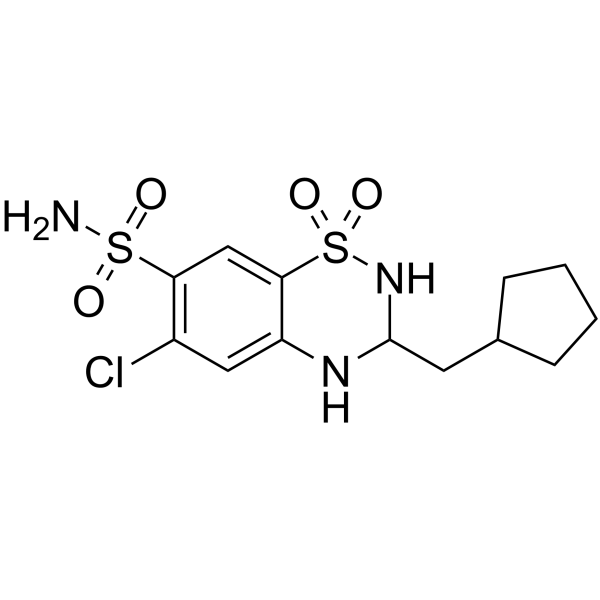
- HY-P5164
-
|
|
Sodium Channel
|
Neurological Disease
|
|
GrTx1 is a peptide toxin originally isolated from the venom of the spider Grammostola rosea. GrTx1 blocks sodium channel, with IC50s of 0.63 µM, 0.23 µM, 0.77 µM, 1.29 µM, 0.63 µM and 0.37 µM for Nav1.1, Nav1.2, Nav1.3, Nav1.4, Nav1.6 and Nav1.7, repectively .GrTx1 can be used for neurological disease research .
|
-
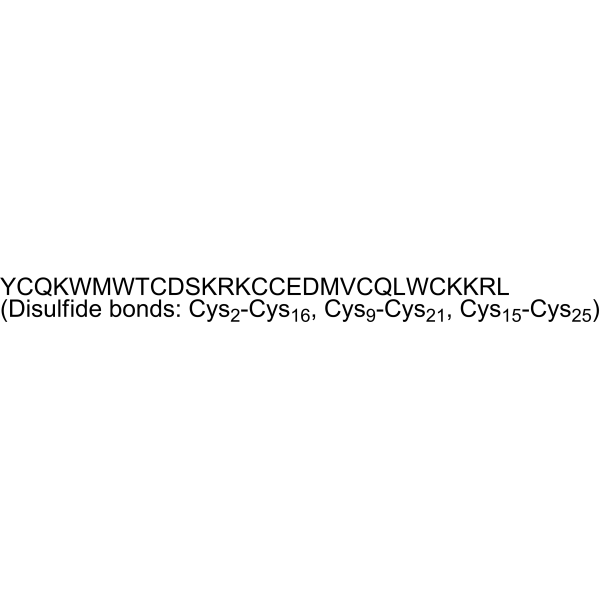
- HY-108502
-
|
|
Sodium Channel
|
Cardiovascular Disease
|
|
KC 12291 hydrochloride is an orally active blocker of voltage-gated sodium channel (VGSC). KC 12291 hydrochloride reduces the amplitude of sustained Na + current to exert antiischemic activity. KC 12291 hydrochloride has significant cardioprotective effect in vitro and in vivo .
|
-
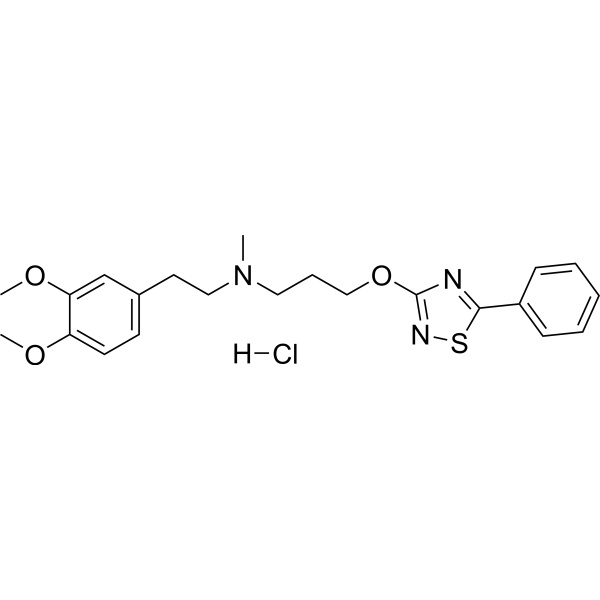
- HY-17612
-
|
NW-3509
|
Sodium Channel
|
Neurological Disease
|
|
Evenamide (NW-3509) is an orally available voltage-gated sodium channel (VGSC) blocker (Ki=0.4 µM) for the research of schizophrenia. Evenamide shows efficacy in a broad spectrum of rodent models of psychosis, mania, depression, and aggressiveness .
|
-
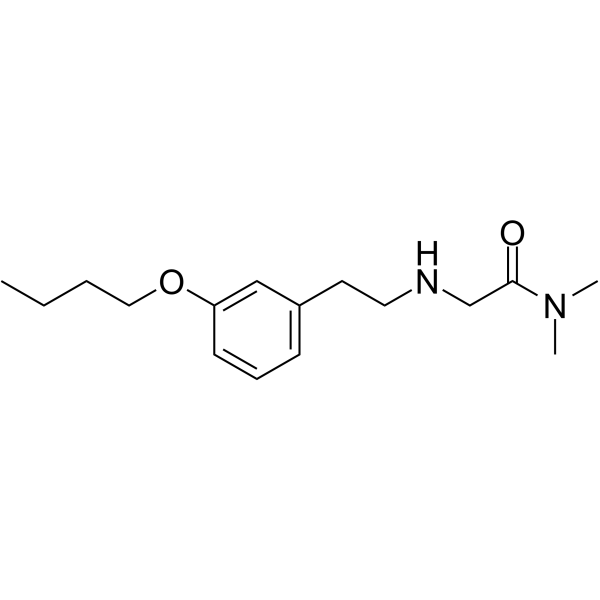
- HY-103311
-
|
Ammoniated ruthenium oxychloride
|
Calcium Channel
|
Cardiovascular Disease
|
|
Ruthenium red (Ammoniated ruthenium oxychloride) is a polycationic dye widely used for electron microscopy (EM) of cells, tissues and vegetative bacteria. Ruthenium red strongly reacts with phospholipids and fatty acids and binds to acidic mucopolysaccharides. Ruthenium red is a L-type calcium current (ICa) blocker .
|
-
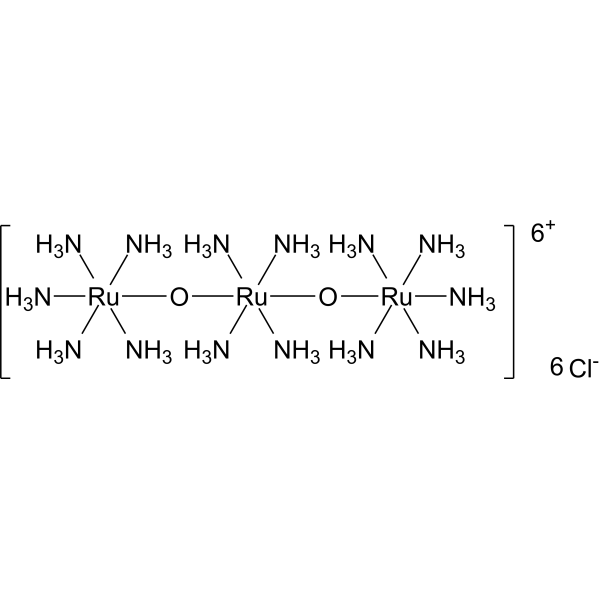
- HY-122376
-
|
D-Trans-Allethrin; Esbiol
|
Sodium Channel
|
Neurological Disease
|
|
S-Bioallethrin is a pyrethroid insecticide. S-Bioallethrin disrupts nerve function by modifying the gating kinetics of transitions between the conducting and nonconducting states of voltage-gated sodium channels .
|
-
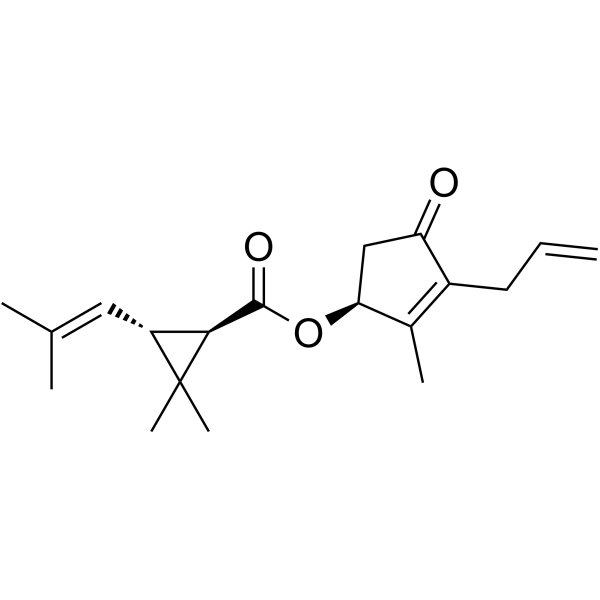
- HY-150612
-
|
|
p38 MAPK
|
Cancer
|
|
(R)-STU104 is a potent and orally active TAK1-MKK3 interaction inhibitor with IC50s of 0.58 μM and 4.0 μM for TNF-α and MKK3 phosphorylation. (R)-STU104 suppresses the TAK1/MKK3/p38/MnK1/MK2/elF4E signal pathways through binding with MKK3 and disrupting the TAK1 phosphorylating MKK3. (R)-STU104 can be used for researching ulcerative colitis .
|
-
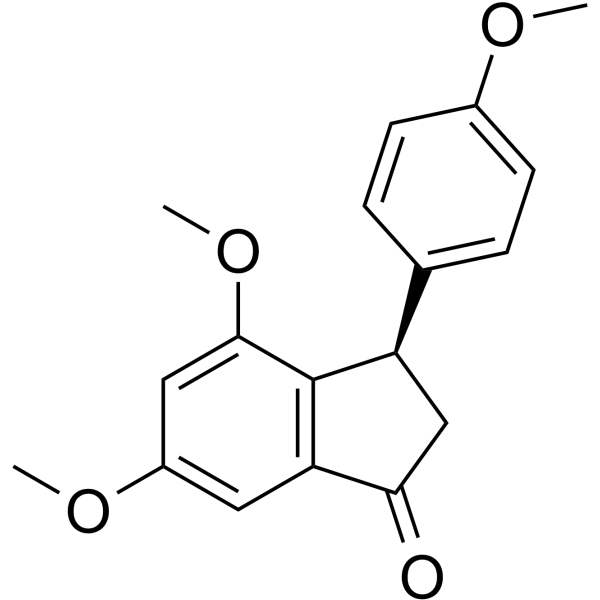
- HY-19463A
-
|
|
Sodium Channel
|
Cardiovascular Disease
|
|
F 15845 is a highly effective persistent sodium current blocker. F 15845 also is a cardioprotective agent, has anti-ischemic activity and exerts short- and long-term cardioprotection after myocardial infarction. F 15845 can be used for the research of myocardium functional impairment .
|
-
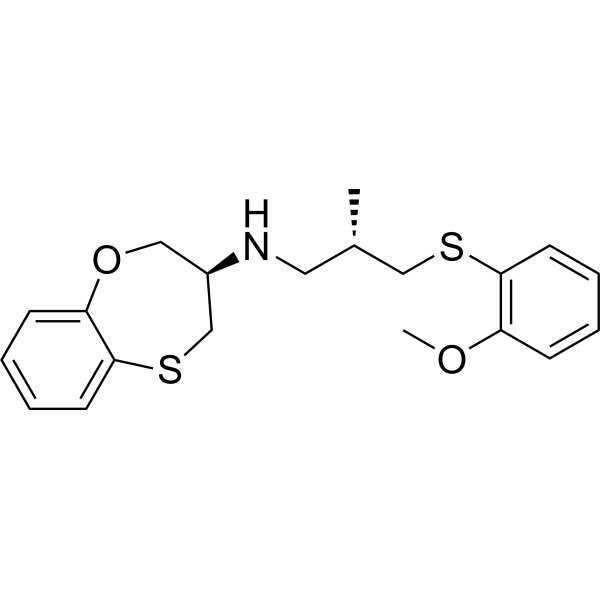
- HY-B1704
-
-
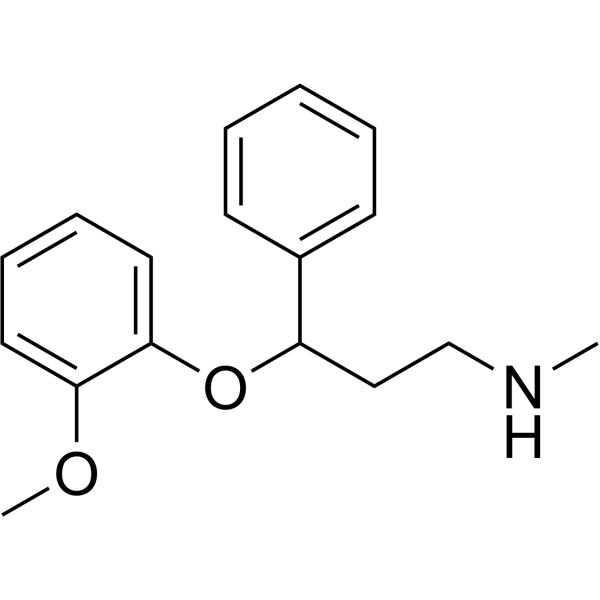
- HY-135478
-
|
NCC1048
|
Calcium Channel
Sodium Channel
|
Neurological Disease
|
|
LY393615 (NCC1048) is a novel neuronal Ca 2+ (calcium channel) and Na + channel (sodium channel) blocker with IC50s of 1.9 μΜ and 5.2 μΜ for α1A and α1B calcium channel subunits. LY393615 has good brain penetration and neuroprotective effects in models of in cerebral ischemia that can be used for neurological disease research .
|
-
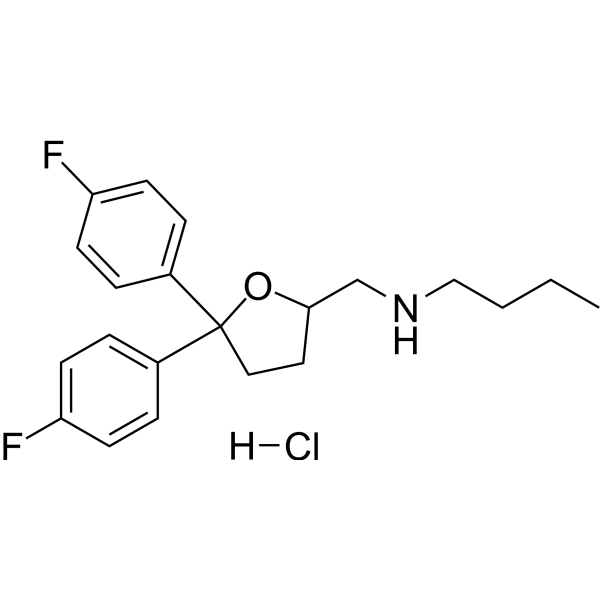
- HY-P1220
-
|
|
Sodium Channel
|
Neurological Disease
|
|
Huwentoxin-IV is a potent and selective sodium channel blocker, inhibits neuronal Nav1.7, Nav1.2, Nav1.3 and Nav1.4 with IC50s of 26, 150, 338 and 400 nM, respectively. Huwentoxin-IV preferentially blocks peripheral nerve subtype Nav1.7 by binding neurotoxin receptor site 4. Huwentoxin-IV has analgesic effects on animal models of inflammatory and neuropathic pain .
|
-
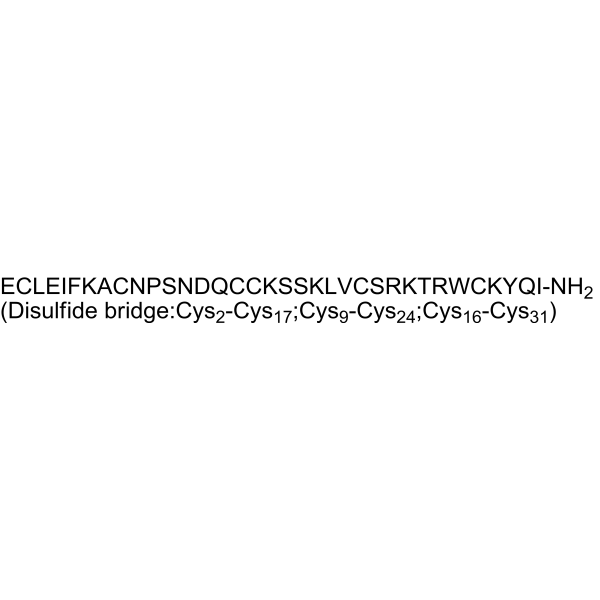
- HY-P1220A
-
|
|
Sodium Channel
|
Neurological Disease
|
|
Huwentoxin-IV TFA is a potent and selective sodium channel blocker, inhibits neuronal Nav1.7, Nav1.2, Nav1.3 and Nav1.4 with IC50s of 26, 150, 338 and 400 nM, respectively. Huwentoxin-IV TFA preferentially blocks peripheral nerve subtype Nav1.7 by binding neurotoxin receptor site 4. Huwentoxin-IV TFA has analgesic effects on animal models of inflammatory and neuropathic pain .
|
-

- HY-111662
-
|
|
NOD-like Receptor (NLR)
|
Inflammation/Immunology
|
|
Fc 11a-2, a benzimidazole compound, is an orally active and potent NLRP3 inflammasome inhibitor. Fc 11a-2 restrains the formation of NLRP3 inflammasome by inhibiting activation of caspase-1 and thus the activation of IL-1b/IL-18. Fc 11a-2 prevents the development of Dextran sulfate sodium (DSS; HY-116282C)-induced murine experimental colitis .
|
-
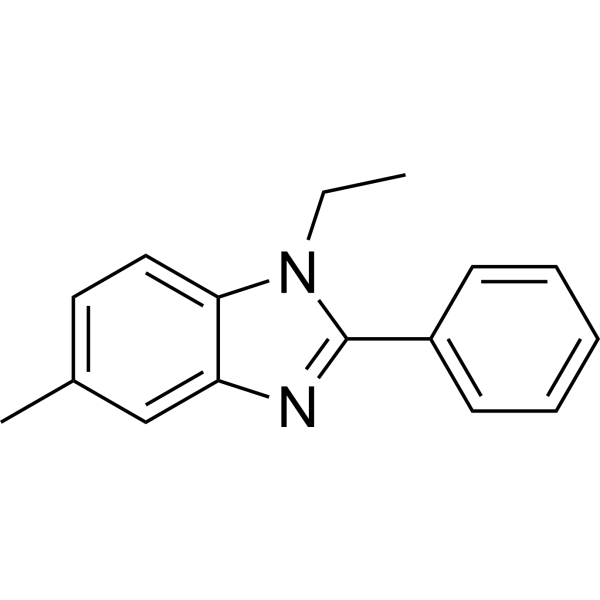
- HY-108506
-
|
BIA 2-005; GP 47779
|
Sodium Channel
|
Neurological Disease
|
|
Licarbazepine (BIA 2-005; GP 47779) is a voltage-gated sodium channel blocker with anticonvulsant and mood-stabilizing effects .
|
-
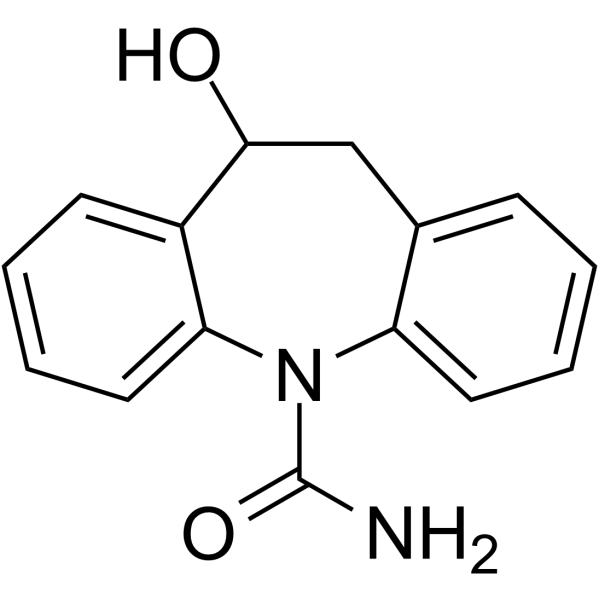
- HY-A0081
-
|
|
Dopamine Receptor
SARS-CoV
Sodium Channel
|
Neurological Disease
Cancer
|
|
Fluphenazine dihydrochloride is a potent, orally active phenothiazine-based dopamine receptor antagonist. Fluphenazine dihydrochloride blocks neuronal voltage-gated sodium channels. Fluphenazine dihydrochloride acts primarily through antagonism of postsynaptic dopamine-2 receptors in mesolimbic, nigrostriatal, and tuberoinfundibular neural pathways. Fluphenazine dihydrochloride can antagonize Methylphenidate-induced stereotyped gnawing and inhibit climbing behaviour in mice. Fluphenazine dihydrochloride can be used for researching psychosis and painful peripheral neuropathy associated with diabetes and has potential to inhibit SARS-CoV-2 .
|
-

- HY-A0093
-
|
KOE-1173 hydrochloride
|
Sodium Channel
|
Cardiovascular Disease
Neurological Disease
|
|
Mexiletine is an orally effective antiarrhythmic agent which has also been found to be effective for myotonia and neuropathic pain. Mexiletine exerts its efficacy through blocking sodium channels (IC50 : 75±8 μM for tonic block, 23.6±2.8 μM for use-dependent block), therefore can be used for cardiovascular and neurological research .
|
-
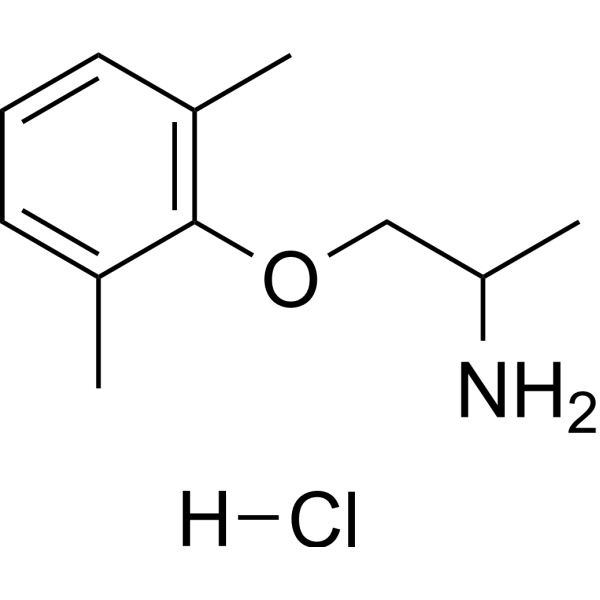
- HY-14945
-
|
GSK189075
|
SGLT
|
Metabolic Disease
|
|
Remogliflozin etabonate (GSK189075) is an orally active, selective and low-affinity sodium glucose cotransporter (SGLT2) inhibitor with Ki values of 1.95 μM, 2.14 μM, 43.1 μM, 8.57 μM for hSGLT2, rSGLT2, hSGLT1, rSGLT1, respectively. Remogliflozin etabonate is a proagent based on benzylpyrazole glucoside and is metabolized to its active form, Remogliflozin, in the body. Remogliflozin etabonate exhibits antidiabetic efficacy in rodent models .
|
-
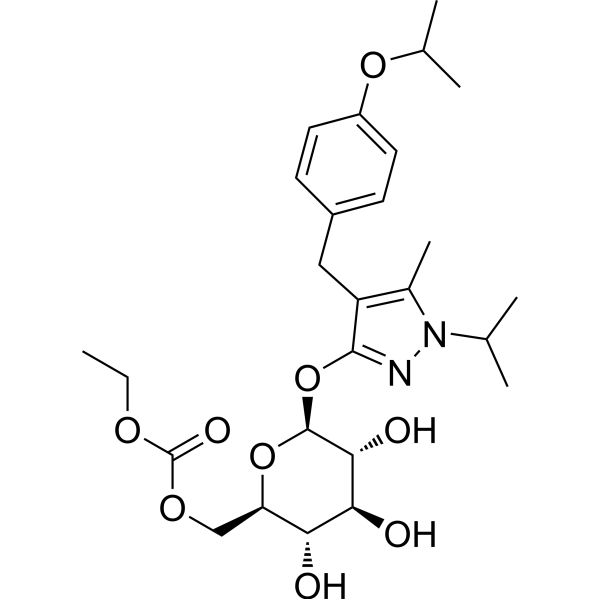
- HY-119980
-
|
|
Sodium Channel
Dopamine Receptor
SARS-CoV
|
Infection
Neurological Disease
|
|
Fluphenazine is a potent, orally active phenothiazine-based dopamine receptor antagonist. Fluphenazine blocks neuronal voltage-gated sodium channels. Fluphenazine acts primarily through antagonism of postsynaptic dopamine-2 receptors in mesolimbic, nigrostriatal, and tuberoinfundibular neural pathways. Fluphenazine can antagonize Methylphenidate-induced stereotyped gnawing and inhibit climbing behaviour in mice. Fluphenazine can be used for researching psychosis and painful peripheral neuropathy associated with diabetes and has potential to inhibit SARS-CoV-2 .
|
-
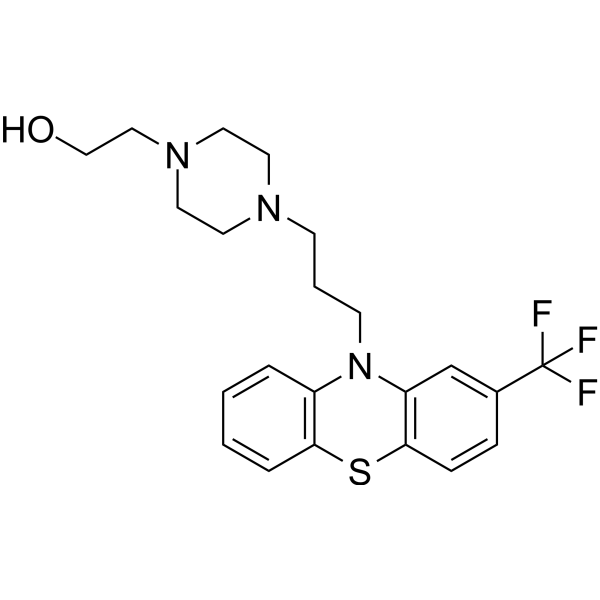
- HY-119980B
-
|
|
Dopamine Receptor
Sodium Channel
SARS-CoV
|
Neurological Disease
|
|
Fluphenazine hydrochloride is a potent, orally active phenothiazine-based dopamine receptor antagonist. Fluphenazine hydrochloride blocks neuronal voltage-gated sodium channels. Fluphenazine hydrochloride acts primarily through antagonism of postsynaptic dopamine-2 receptors in mesolimbic, nigrostriatal, and tuberoinfundibular neural pathways. Fluphenazine hydrochloride can antagonize Methylphenidate-induced stereotyped gnawing and inhibit climbing behaviour in mice. Fluphenazine hydrochloride can be used for researching psychosis and painful peripheral neuropathy associated with diabetes and has potential to inhibit SARS-CoV-2 .
|
-
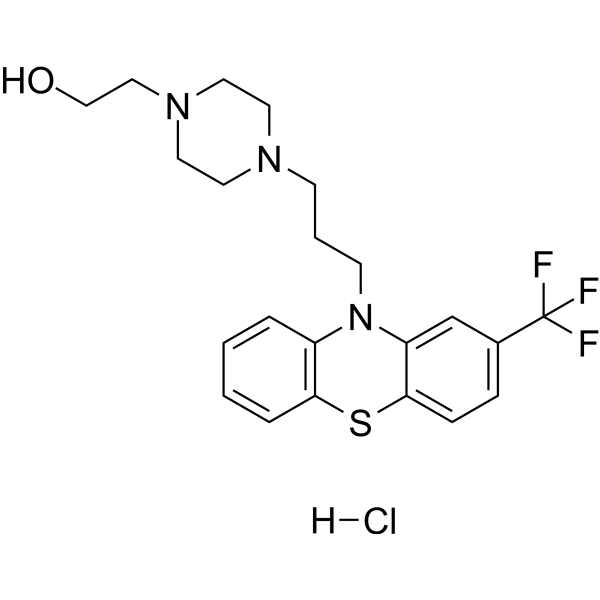
- HY-147377
-
-
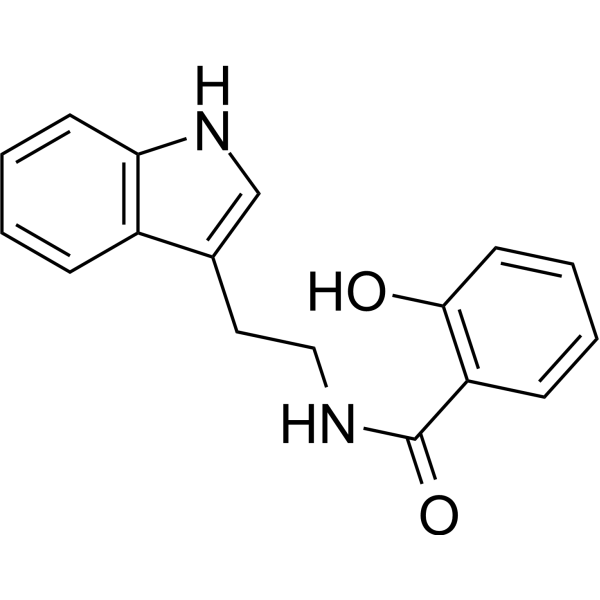
- HY-P5152
-
|
|
Sodium Channel
|
Neurological Disease
|
|
Scorpion toxin Tf2 is a β-scorpion toxin, which is firstly identified in the venom of the Brazilian scorpion Tityus fasciolatus. Scorpion toxin Tf2 is a Nav1.3 activator, which is a neuronal voltage-gated sodium (Nav) subtype implicated in epilepsy and nociception. Scorpion toxin Tf2 enhances hNav1.3 activation voltage and opens the channel at resting membrane potentials .
|
-
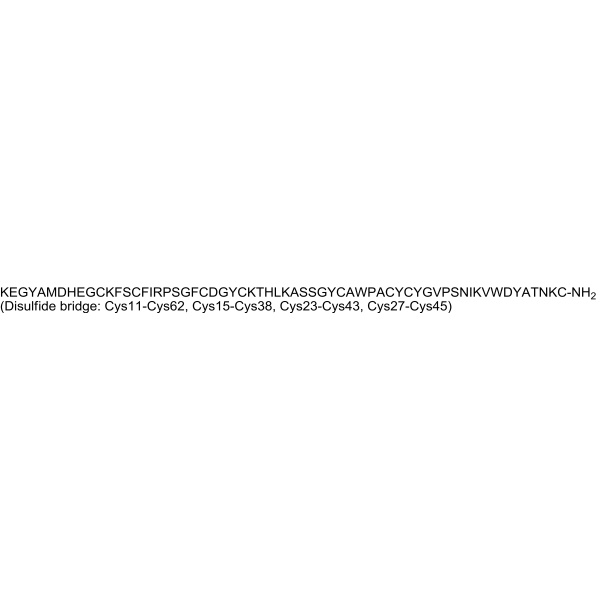
| Cat. No. |
Product Name |
Type |
-
- HY-103311
-
|
Ammoniated ruthenium oxychloride
|
Dyes
|
|
Ruthenium red (Ammoniated ruthenium oxychloride) is a polycationic dye widely used for electron microscopy (EM) of cells, tissues and vegetative bacteria. Ruthenium red strongly reacts with phospholipids and fatty acids and binds to acidic mucopolysaccharides. Ruthenium red is a L-type calcium current (ICa) blocker .
|
-
- HY-D1442
-
|
|
Fluorescent Dyes/Probes
|
|
SBFI (tetraammonium), the tetraammonium salt of SBFI, is a sodium fluorescence indicator. SBFI (tetraammonium) is sodium-sensitive dye. The excitation wavelength is set 333 nm, and the emission wavelength is 539 nm for SBFI .
|
| Cat. No. |
Product Name |
Type |
-
- HY-W094708D
-
|
Disodium hydrogen phosphate dihydrate, meets analytical specification of Ph. Eur. BP
|
Biochemical Assay Reagents
|
|
Sodium phosphate dibasic dihydrate, meets analytical specification of Ph. Eur. BP is an inorganic salt that can be used for life science related research .
|
-
- HY-Y0344H
-
|
Halite (Pharmaceutical primary standard, USP)
|
Buffer Reagents
|
|
Sodium chloride, United States Pharmacopeia (USP) Reference Standard is an inorganic salt that can be used for life science related research .
|
-
- HY-Y0308H
-
|
Disodium hydrogen phosphate, for molecular biology
|
Biochemical Assay Reagents
|
|
Sodium phosphate dibasic, for molecular biology is an inorganic salt that can be used for life science related research .
|
-
- HY-Y1325E
-
|
sodium acetate trihydrate (Pharmaceutical primary standard, USP)
|
Biochemical Assay Reagents
|
|
Sodium acetate trihydrate, United States Pharmacopeia (USP) Reference Standard is an inorganic salt that can be used for life science related research .
|
-
- HY-Y1325H
-
|
|
Biochemical Assay Reagents
|
|
Sodium acetate trihydrate, meets analytical specification of Ph. Eur. BP USP FCC E262, ≤0.00002% Al is an inorganic salt that can be used for life science related research .
|
-
- HY-B1610J
-
|
|
Biochemical Assay Reagents
|
|
Sodium citrate buffer, 0.5M, pH 5.0, is a commonly used buffer with main components are citric acid and sodium hydrogen phosphate. Sodium citrate buffer, 0.5M, pH 5.0 is used in heat induced epitope retrieval (HIER) methods to reverse the loss of antigenicity that occurs with some epitopes in formalin-fixed paraffin embedded tissues. Sodium citrate buffer, 0.5M, pH 5.0 is the preferred solution for most antibodies . Sodium citrate buffer, 0.5M, pH 5.0 is used as solution for captisol in animal tumor models .
|
-
- HY-B1610K
-
|
|
Biochemical Assay Reagents
|
|
Sodium citrate buffer, 0.5M, pH 5.5, is a commonly used buffer with main components are citric acid and sodium hydrogen phosphate. Sodium citrate buffer 0.5M pH 5.5 is used in heat induced epitope retrieval (HIER) methods to reverse the loss of antigenicity that occurs with some epitopes in formalin-fixed paraffin embedded tissues. Sodium citrate buffer 0.5M pH 5.5 is the preferred solution for most antibodies. .
|
-
- HY-B1610L
-
|
|
Biochemical Assay Reagents
|
|
Sodium citrate buffer, 0.5M, pH 6.0, is a commonly used buffer with main components are citric acid and sodium hydrogen phosphate. Sodium citrate buffer, 0.5M, pH 6.0 is used for RNA isolation and antigens detection in fixed tissue .
|
-
- HY-B1610M
-
|
|
Biochemical Assay Reagents
|
|
Sodium citrate buffer, 0.5M, pH 6.5, is a commonly used buffer with main components are citric acid and sodium hydrogen phosphate. Sodium citrate buffer, 0.5M, pH 6.5 is used in heat induced epitope retrieval (HIER) methods to reverse the loss of antigenicity that occurs with some epitopes in formalin-fixed paraffin embedded tissues. Sodium citrate buffer, 0.5M, pH 6.5 is the preferred solution for most antibodies .
|
-
- HY-B1610N
-
|
|
Biochemical Assay Reagents
|
|
Sodium citrate buffer, 0.1M, pH 4.0, is a commonly used buffer with main components are citric acid and sodium hydrogen phosphate. Sodium citrate buffer, 0.1M, pH 4.0 is used in heat induced epitope retrieval (HIER) methods to reverse the loss of antigenicity that occurs with some epitopes in formalin-fixed paraffin embedded tissues. Sodium citrate buffer, 0.1M, pH 4.0 is the preferred solution for most antibodies . Sodium citrate buffer, 0.1M, pH 4.0 is used in the hydration of liposome film .
|
-
- HY-B2243D
-
|
sodium phosphate monobasic, for cell culture; Monosodium dihydrogen orthophosphate, for cell culture; Monosodium phosphate, for cell culture
|
Buffer Reagents
|
|
Anhydrous sodium dihydrogen phosphate, for molecular biology (Monosodium phosphate, for molecular biology) is an inorganic salt compound that can be used as a buffer and nutritional supplement. Anhydrous sodium dihydrogen phosphate, for molecular biology can be used in cell culture .
|
-
- HY-B2243B
-
|
sodium phosphate monobasic for molecular biology; Monosodium dihydrogen orthophosphate for molecular biology; Monosodium phosphate for molecular biology
|
Buffer Reagents
|
|
Anhydrous sodium dihydrogen phosphate, meets USP testing specifications is an inorganic salt compound that can be used as a buffer and nutritional supplement. Anhydrous sodium dihydrogen phosphate, meets USP testing specifications can be used in molecular biology experiments .
|
-
- HY-160113
-
|
|
Biochemical Assay Reagents
|
|
Sodium phosphate buffer (pH 6.9 0.02 mol/l) is a water-based salt solution. Sodium phosphate buffer (pH 6.9 0.02 mol/l) can be used in a variety of biochemical studies.
|
-
- HY-111157
-
|
AHR11748; AN051; ADD94057
|
Cell Assay Reagents
|
|
Dezinamide (ADD94057) is an antiepileptic agent. Dezinamide binds to the voltage-sensitive sodium channel .
|
-
- HY-E70073
-
|
Sialidase isoenzyme M2; AuSialidase M2
|
Biochemical Assay Reagents
|
|
Ganglioside sialidase (AuSialidase M2) from Arthrobacter ureafaciens. Ganglioside sialidase is a highly specific N-acetylneuraminidase. Ganglioside sialidase can hydrolyze the internal sialic acid of GM1 under optimal condition with sodium cholate .
|
| Cat. No. |
Product Name |
Target |
Research Area |
-
- HY-P5808A
-
-
- HY-P5772
-
|
|
Sodium Channel
|
Neurological Disease
|
|
Jingzhaotoxin-II, a 32 amino acid residues including two acidic and two basic residues, is a neurotoxin. Jingzhaotoxin-II inhibits voltage-gated sodium channels (VGSC) that significantly slows rapid inactivation of TTX-resistant (TTX-R) VGSC on cardiac myocytes with the IC50 of 0.26 μM .
|
-
- HY-P5942
-
-
- HY-P5943
-
-
- HY-P5180
-
|
|
Sodium Channel
|
Neurological Disease
|
|
Jingzhaotoxin-V is a peptide that inhibits potassium currents in Xenopus laevis oocytes with an IC50 value of 604.2 nM. Jingzhaotoxin-V also inhibits tetrodotoxin-resistant and tetrodotoxin-sensitive sodium currents in rat dorsal root ganglion neurons with IC50 values of 27.6 and 30.2 nM, respectively .
|
-
- HY-P5773
-
|
|
Sodium Channel
|
Neurological Disease
|
|
Jingzhaotoxin-34, a 35-residue polypeptide, is a neurotoxin. Jingzhaotoxin-34 inhibits tetrodotoxin-sensitive (TTX-S) sodium currents (IC50 of ~85 nM) while having no significant effects on tetrodotoxin-resistant (TTX-R) sodium currents on rat dorsal root ganglion neurons .
|
-
- HY-P1219
-
|
β-TRTX-Cj1α
|
Sodium Channel
|
Neurological Disease
|
|
Jingzhaotoxin-III is a potent and selective blocker of Nav1.5 channels, with an IC50 of 348 nM, and shows no effect on other sodium channel isoforms. Jingzhaotoxin-III can selectively inhibit the activation of cardiac sodium channel but not neuronal subtypes, and hopefully represents an important ligand for discriminating cardiac VGSC subtype .
|
-
- HY-P1952A
-
|
|
Sodium Channel
|
Neurological Disease
|
|
µ-Conotoxin-CnIIIC acetate, a 22-residue conopeptide, is a potent antagonist of the voltage-gated NaV1.4 sodium channel with an IC50 of 1.3 nM acting at the neuromuscular junction. µ-Conotoxin-CnIIIC acetate has myorelaxant and analgesic effects .
|
-
- HY-P5770
-
|
|
Sodium Channel
|
Neurological Disease
|
|
Jingzhaotoxin-V, a 29-residue polypeptide, is derived from the venom of the spider Chilobrachys jingzhao. Jingzhaotoxin-V inhibits tetrodotoxin-resistant and tetrodotoxin-sensitive sodium currents in rat dorsal root ganglion neurons with IC50 values of 27.6 nM and 30.2 nM, respectively. Jingzhaotoxin-V also inhibits Kv4.2 potassium currents expressed in Xenpus Laevis oocytes (IC50 of 604.2 nM) .
|
-
- HY-P5771
-
|
|
Sodium Channel
|
Neurological Disease
|
|
Jingzhaotoxin-IX, a C-terminally amidated peptide composed of 35 amino acid residues, is a neurotoxin. Jingzhaotoxin-IX inhibits voltage-gated sodium channels (both tetrodotoxin-resistant and tetrodotoxin-sensitive isoforms) and Kv2.1 channel. Jingzhaotoxin-IX has no effect on delayed rectifier potassium channel Kv1.1, 1.2 and 1.3 .
|
-
- HY-P5807
-
|
β-Mammal toxin Cn2
|
Peptides
|
Neurological Disease
|
|
Cn2 toxin is aβ- toxoins. Cn2 toxin can bind to the voltage
sensing domain of voltage gated sodium channels (Nav)
.
|
-
- HY-P5179
-
|
HWTX-I
|
Calcium Channel
Sodium Channel
|
Neurological Disease
|
|
Huwentoxin I (HWTX-I) is a peptide toxin that inhibits voltage-gated sodium channels and N-type calcium channels. Huwentoxin I inhibits sodium channels in rat hippocampus and cockroach dorsal unpaired median (DUM) neurons with IC50 values of 66.1 and 4.80 nM, respectively .
|
-
- HY-P5177
-
-
- HY-P5868
-
|
|
Sodium Channel
|
Neurological Disease
|
|
mHuwentoxin-IV is a naturally modified Huwentoxin-IV (HY-P1220). mHuwentoxin-IV inhibits tetrodotoxin-sensitive (TTX-S) voltage-gated sodium channels of dorsal root ganglion neurons with an IC50 of 54.16 nM. mHuwentoxin-IV inhibition of tetrodotoxin-sensitive sodium channels is not reversed by strong depolarization voltages .
|
-
- HY-P5808
-
|
|
Peptides
|
Neurological Disease
|
|
lota-conotoxin RXIA is an agonist of voltage-gated
sodium channels (Nav1.2, 1.6, 1.7). Iota-conotoxin RXIA
can induce repetitive action potential and seizure in motor axons of frogs
after intracranial injection in mice .
|
-
- HY-P3777
-
|
|
Potassium Channel
|
Neurological Disease
|
|
β-Bag cell peptide is a neuroactive peptide. β-Bag cell peptide elevates cyclic AMP levels in the bag cell neurons. β-Bag cell peptide decreases the amplitudes of the voltage-dependent potassium currents .
|
-
- HY-P5184
-
|
HNTX-IV
|
Sodium Channel
|
Neurological Disease
|
|
Hainantoxin-IV is a specific antagonist of Sodium Channel, targeting to tetrodotoxin-sensitive (TTX-S) voltage-gated sodium channels. His28 and Lys32 are the key resiudes of Hainantoxin-IV for binding with target, while Hainantoxin-IV adopts an inhibitor cystine knot motif .
|
-
- HY-P1218A
-
|
|
Sodium Channel
|
Neurological Disease
|
|
Phrixotoxin 3 TFA is a potent blocker of voltage-gated sodium channels, with IC50s of 0.6, 42, 72, 288, 610 nM for NaV1.2, NaV1.3, NaV1.4, NaV1.1 and NaV1.5, respectively. Phrixotoxin 3 TFA modulates voltage-gated sodium channels with properties similar to those of typical gating-modifier toxins, both by causing a depolarizing shift in gating kinetics and by blocking the inward component of the sodium current .
|
-
- HY-P1218
-
|
|
Sodium Channel
|
Neurological Disease
|
|
Phrixotoxin 3 is a potent blocker of voltage-gated sodium channels, with IC50s of 0.6, 42, 72, 288, 610 nM for NaV1.2, NaV1.3, NaV1.4, NaV1.1 and NaV1.5, respectively. Phrixotoxin 3 modulates voltage-gated sodium channels with properties similar to those of typical gating-modifier toxins, both by causing a depolarizing shift in gating kinetics and by blocking the inward component of the sodium current .
|
-
- HY-P5164
-
|
|
Sodium Channel
|
Neurological Disease
|
|
GrTx1 is a peptide toxin originally isolated from the venom of the spider Grammostola rosea. GrTx1 blocks sodium channel, with IC50s of 0.63 µM, 0.23 µM, 0.77 µM, 1.29 µM, 0.63 µM and 0.37 µM for Nav1.1, Nav1.2, Nav1.3, Nav1.4, Nav1.6 and Nav1.7, repectively .GrTx1 can be used for neurological disease research .
|
-
- HY-P1220
-
|
|
Sodium Channel
|
Neurological Disease
|
|
Huwentoxin-IV is a potent and selective sodium channel blocker, inhibits neuronal Nav1.7, Nav1.2, Nav1.3 and Nav1.4 with IC50s of 26, 150, 338 and 400 nM, respectively. Huwentoxin-IV preferentially blocks peripheral nerve subtype Nav1.7 by binding neurotoxin receptor site 4. Huwentoxin-IV has analgesic effects on animal models of inflammatory and neuropathic pain .
|
-
- HY-P1220A
-
|
|
Sodium Channel
|
Neurological Disease
|
|
Huwentoxin-IV TFA is a potent and selective sodium channel blocker, inhibits neuronal Nav1.7, Nav1.2, Nav1.3 and Nav1.4 with IC50s of 26, 150, 338 and 400 nM, respectively. Huwentoxin-IV TFA preferentially blocks peripheral nerve subtype Nav1.7 by binding neurotoxin receptor site 4. Huwentoxin-IV TFA has analgesic effects on animal models of inflammatory and neuropathic pain .
|
-
- HY-P5152
-
|
|
Sodium Channel
|
Neurological Disease
|
|
Scorpion toxin Tf2 is a β-scorpion toxin, which is firstly identified in the venom of the Brazilian scorpion Tityus fasciolatus. Scorpion toxin Tf2 is a Nav1.3 activator, which is a neuronal voltage-gated sodium (Nav) subtype implicated in epilepsy and nociception. Scorpion toxin Tf2 enhances hNav1.3 activation voltage and opens the channel at resting membrane potentials .
|
| Cat. No. |
Product Name |
Category |
Target |
Chemical Structure |
| Cat. No. |
Product Name |
Chemical Structure |
-
- HY-111095S3A
-
|
|
|
D-(-)-Lactic acid-13C-2 (sodium) is a sodium. D-(-)-Lactic acid-13C-2 (sodium) can be used for a variety of biochemical studies.
|
-

Your information is safe with us. * Required Fields.
Inquiry Information
- Product Name:
- Cat. No.:
- Quantity:
- MCE Japan Authorized Agent:







































































































